Cruise Ship Pollution: Background, Laws and Regulations, and Key Issues
July 2, 2004 – December 15, 2010 RL32450
The cruise industry is a significant and growing contributor to the U.S. economy, providing more than $32 billion in benefits annually and generating more than 330,000 U.S. jobs, but also making the environmental impacts of its activities an issue to many. Although cruise ships represent a small fraction of the entire shipping industry worldwide, public attention to their environmental impacts comes in part from the fact that cruise ships are highly visible and in part because of the industry’s desire to promote a positive image.
Cruise ships carrying several thousand passengers and crew have been compared to “floating cities,” and the volume of wastes that they produce is comparably large, consisting of sewage; wastewater from sinks, showers, and galleys (graywater); hazardous wastes; solid waste; oily bilge water; ballast water; and air pollution. The waste streams generated by cruise ships are governed by a number of international protocols (especially MARPOL) and U.S. domestic laws (including the Clean Water Act and the Act to Prevent Pollution from Ships), regulations, and standards, but there is no single law or rule. Some cruise ship waste streams appear to be well regulated, such as solid wastes (garbage and plastics) and bilge water. But there is overlap of some areas, and there are gaps in others. Some, such as graywater and ballast water, are not regulated (except in the Great Lakes), and concern is increasing about the impacts of these discharges on public health and the environment. In other areas, regulations apply, but critics argue that they are not stringent enough to address the problem—for example, with respect to standards for sewage discharges. Environmental advocates have raised concerns about the adequacy of existing laws for managing these wastes, and they contend that enforcement is weak.
In 2000, Congress enacted legislation restricting cruise ship discharges in U.S. navigable waters within the state of Alaska. California, Alaska, and Maine have enacted state-specific laws concerning cruise ship pollution, and a few other states have entered into voluntary agreements with industry to address management of cruise ship discharges. Meanwhile, the cruise industry has voluntarily undertaken initiatives to improve pollution prevention, by adopting waste management guidelines and procedures and researching new technologies. Concerns about cruise ship pollution raise issues for Congress in three broad areas: adequacy of laws and regulations, research needs, and oversight and enforcement of existing requirements. Legislation to regulate cruise ship discharges of sewage, graywater, and bilge water nationally was introduced in the 111th Congress (H.R. 3888 and S. 1820), but no legislative activity occurred on either bill.
This report describes the several types of waste streams that cruise ships may discharge and emit. It identifies the complex body of international and domestic laws that address pollution from cruise ships. It then describes federal and state legislative activity concerning cruise ships in Alaskan waters and activities in a few other states, as well as current industry initiatives to manage cruise ship pollution. Issues for Congress are discussed.
Topic areas
Economic Policy

Introduction
Cruise ship waste streams, applicable laws and regulations, international legal regime, domestic laws and regulations, solid waste, hazardous waste, bilge water, ballast water, air pollution, considerations of geographic jurisdiction, alaskan activities, federal legislation, alaska state legislation and initiatives, other state activities, industry initiatives, issues for congress, laws and regulations, oversight and enforcement.
The cruise industry is a significant and growing contributor to the U.S. economy, providing more than $32 billion in benefits annually and generating more than 330,000 U.S. jobs, but also making the environmental impacts of its activities an issue to many. Although cruise ships represent a small fraction of the entire shipping industry worldwide, public attention to their environmental impacts comes in part from the fact that cruise ships are highly visible and in part because of the industry's desire to promote a positive image.
Cruise ships carrying several thousand passengers and crew have been compared to "floating cities," and the volume of wastes that they produce is comparably large, consisting of sewage; wastewater from sinks, showers, and galleys (graywater); hazardous wastes; solid waste; oily bilge water; ballast water; and air pollution. The waste streams generated by cruise ships are governed by a number of international protocols (especially MARPOL) and U.S. domestic laws (including the Clean Water Act and the Act to Prevent Pollution from Ships), regulations, and standards, but there is no single law or rule. Some cruise ship waste streams appear to be well regulated, such as solid wastes (garbage and plastics) and bilge water. But there is overlap of some areas, and there are gaps in others. Some, such as graywater and ballast water, are not regulated (except in the Great Lakes), and concern is increasing about the impacts of these discharges on public health and the environment. In other areas, regulations apply, but critics argue that they are not stringent enough to address the problem—for example, with respect to standards for sewage discharges. Environmental advocates have raised concerns about the adequacy of existing laws for managing these wastes, and they contend that enforcement is weak.
In 2000, Congress enacted legislation restricting cruise ship discharges in U.S. navigable waters within the state of Alaska. California, Alaska, and Maine have enacted state-specific laws concerning cruise ship pollution, and a few other states have entered into voluntary agreements with industry to address management of cruise ship discharges. Meanwhile, the cruise industry has voluntarily undertaken initiatives to improve pollution prevention, by adopting waste management guidelines and procedures and researching new technologies. Concerns about cruise ship pollution raise issues for Congress in three broad areas: adequacy of laws and regulations, research needs, and oversight and enforcement of existing requirements. Legislation to regulate cruise ship discharges of sewage, graywater, and bilge water nationally was introduced in the 111 th Congress ( H.R. 3888 and S. 1820 ), but no legislative activity occurred on either bill.
More than 53,000 commercial vessels—tankers, bulk carriers, container ships, barges, and passenger ships—travel the oceans and other waters of the world, carrying cargo and passengers for commerce, transport, and recreation. Their activities are regulated and scrutinized in a number of respects by international protocols and U.S. domestic laws, including those designed to protect against discharges of pollutants that could harm marine resources, other parts of the ambient environment, and human health. However, there are overlaps of some requirements, gaps in other areas, geographic differences in jurisdiction based on differing definitions, and questions about the adequacy of enforcement.
Public attention to the environmental impacts of the maritime industry has been especially focused on the cruise industry, in part because its ships are highly visible and in part because of the industry's desire to promote a positive image. It represents a relatively small fraction of the entire shipping industry worldwide. As of October 2010, passenger ships (which include cruise ships and ferries) composed about 13% of the world shipping fleet. 1 The cruise industry is a significant and growing contributor to the U.S. economy, providing $40 billion in total benefits in 2009 and generating more than 357,000 U.S. jobs, 2 but also making the environmental impacts of its activities an issue to many. Since 1990, the average annual growth rate in the number of cruise passengers worldwide has been 7.4%, and in 2010, cruises hosted an estimated 14.3 million passengers. The worldwide cruise ship fleet consists of more than 230 ships, and the majority are foreign-flagged, with Liberia and Panama being the most popular flag countries. 3 Foreign-flag cruise vessels owned by six companies account for nearly 95% of passenger ships operating in U.S. waters. Each year, the industry adds new ships to the total fleet, vessels that are bigger, more elaborate and luxurious, and that carry larger numbers of passengers and crew. Over the past two decades, the average ship size has been increasing at the rate of roughly 90 feet every five years. The average ship entering the market from 2008 to 2011 will be more than 1,050 feet long and will weigh more than 130,000 tons. 4
To the cruise ship industry, a key issue is demonstrating to the public that cruising is safe and healthy for passengers and the tourist communities that are visited by their ships. Cruise ships carrying several thousand passengers and crew have been compared to "floating cities," in part because the volume of wastes produced and requiring disposal is greater than that of many small cities on land. During a typical one-week voyage, a large cruise ship (with 3,000 passengers and crew) is estimated to generate 210,000 gallons of sewage; 1 million gallons of graywater (wastewater from sinks, showers, and laundries); more than 130 gallons of hazardous wastes; 8 tons of solid waste; and 25,000 gallons of oily bilge water. 5 Those wastes, if not properly treated and disposed of, can pose risks to human health, welfare, and the environment. Environmental advocates have raised concerns about the adequacy of existing laws for managing these wastes, and suggest that enforcement of existing laws is weak.
A 2000 General Accounting Office (GAO) report focused attention on problems of cruise vessel compliance with environmental requirements. 6 GAO found that between 1993 and 1998, foreign-flag cruise ships were involved in 87 confirmed illegal discharge cases in U.S. waters. A few of the cases included multiple illegal discharge incidents occurring over the six-year period. GAO reviewed three major waste streams (solids, hazardous chemicals, and oily bilge water) and concluded that 83% of the cases involved discharges of oil or oil-based products, the volumes of which ranged from a few drops to hundreds of gallons. The balance of the cases involved discharges of plastic or garbage. GAO judged that 72% of the illegal discharges were accidental, 15% were intentional, and 13% could not be determined. The 87 cruise ship cases represented 4% of the 2,400 illegal discharge cases by foreign-flag ships (including tankers, cargo ships and other commercial vessels, as well as cruise ships) confirmed during the six years studied by GAO. Although cruise ships operating in U.S. waters have been involved in a relatively small number of pollution cases, GAO said, several have been widely publicized and have led to criminal prosecutions and multimillion-dollar fines.
In 2000, a coalition of 53 environmental advocacy groups petitioned the Environmental Protection Agency (EPA) to take regulatory action to address pollution by cruise ships. 7 The petition called for an investigation of wastewater, oil, and solid waste discharges from cruise ships. In response, EPA agreed to study cruise ship discharges and waste management approaches. As part of that effort, in 2000 EPA issued a background document with preliminary information and recommendations for further assessment through data collection and public information hearings. 8 Subsequently, in December 2008, the agency released a cruise ship discharge assessment report as part of its response to the petition. This report summarized information on cruise ship waste streams and findings of recent data collection activities (especially from cruise ships operating in Alaskan waters). It also identified options to address ship discharges. 9
This report presents information on issues related to cruise ship pollution. It begins by describing the several types of waste streams and contaminants that cruise ships may generate and release. It identifies the complex body of international and domestic laws that address pollution from cruise ships, as there is no single law in this area. Some wastes are covered by international standards, some are subject to U.S. law, and for some there are gaps in law, regulation, or possibly both. The report then describes federal and state legislative activity concerning cruise ships in Alaskan waters and activities in a few other states. Cruise ship companies have taken a number of steps to prevent illegal waste discharges and have adopted waste management plans and practices to improve their environmental operations. Environmental critics acknowledge these initiatives, even as they have petitioned the federal government to strengthen existing regulation of cruise ship wastes. Environmental groups endorsed legislation in the 109 th and 110 th Congresses (the Clean Cruise Ship Act) that would require stricter standards to control wastewater and other discharges from cruise ships. Similar legislation was introduced in the 111 th Congress (the Clean Cruise Ship Act, H.R. 3888 and S. 1820 ), but no legislative action occurred.
Cruise ships generate a number of waste streams that can result in discharges to the marine environment, including sewage, graywater, hazardous wastes, oily bilge water, ballast water, and solid waste. They also emit air pollutants to the air and water. These wastes, if not properly treated and disposed of, can be a significant source of pathogens, nutrients, and toxic substances with the potential to threaten human health and damage aquatic life. It is important, however, to keep these discharges in some perspective, because cruise ships represent a small—although highly visible—portion of the entire international shipping industry, and the waste streams described here are not unique to cruise ships. However, particular types of wastes, such as sewage, graywater, and solid waste, may be of greater concern for cruise ships relative to other seagoing vessels, because of the large numbers of passengers and crew that cruise ships carry and the large volumes of wastes that they produce. Further, because cruise ships tend to concentrate their activities in specific coastal areas and visit the same ports repeatedly (especially Florida, California, New York, Galveston, Seattle, and the waters of Alaska), their cumulative impact on a local scale could be significant, as can impacts of individual large-volume releases (either accidental or intentional).
Blackwater is sewage, wastewater from toilets and medical facilities, which can contain harmful bacteria, pathogens, diseases, viruses, intestinal parasites, and harmful nutrients. Discharges of untreated or inadequately treated sewage can cause bacterial and viral contamination of fisheries and shellfish beds, producing risks to public health. Nutrients in sewage, such as nitrogen and phosphorous, promote excessive algal growth, which consumes oxygen in the water and can lead to fish kills and destruction of other aquatic life. Cruise ships generate, on average, 8.4 gallons/day/person of sewage, and a large cruise ship (3,000 passengers and crew) can generate an estimated 15,000 to 30,000 gallons per day of sewage. 10
Graywater is wastewater from the sinks, showers, galleys, laundry, and cleaning activities aboard a ship. It can contain a variety of pollutant substances, including fecal coliform bacteria, detergents, oil and grease, metals, organics, petroleum hydrocarbons, nutrients, food waste, and medical and dental waste. Sampling done by EPA and the state of Alaska found that untreated graywater from cruise ships can contain pollutants at variable strengths, and that it can contain levels of fecal coliform bacteria one to three times greater than is typically found in untreated domestic wastewater. Cruise ships generate, on average, 67 gallons/day/person of graywater (or, approximately 200,000 gallons per day for a 3,000-person cruise ship); by comparison, residential graywater generation is estimated to be 51 gallons/person/day. 11 Graywater has potential to cause adverse environmental effects because of concentrations of nutrients and other oxygen-demanding materials, in particular. Graywater is typically the largest source of liquid waste generated by cruise ships (90%-95% of the total).
Solid waste generated on a ship includes glass, paper, cardboard, aluminum and steel cans, and plastics. It can be either non-hazardous or hazardous in nature. Solid waste that enters the ocean may become marine debris, and it can then pose a threat to marine organisms, humans, coastal communities, and industries that utilize marine waters. Cruise ships typically manage solid waste by a combination of source reduction, waste minimization, and recycling. However, as much as 75% of solid waste is incinerated on board, and the ash typically is discharged at sea, although some is landed ashore for disposal or recycling. Marine mammals, fish, sea turtles, and birds can be injured or killed from entanglement with plastics and other solid waste that may be released or disposed off of cruise ships. On average, each cruise ship passenger generates at least two pounds of non-hazardous solid waste per day and disposes of two bottles and two cans. 12 With large cruise ships carrying several thousand passengers, the amount of waste generated in a day can be massive. For a large cruise ship, about 8 tons of solid waste are generated during a one-week cruise. 13 It has been estimated that 24% of the solid waste generated by vessels worldwide (by weight) comes from cruise ships. 14 Most cruise ship garbage is treated on board (incinerated, pulped, or ground up) for discharge overboard. When garbage must be off-loaded (for example, because glass and aluminum cannot be incinerated), cruise ships can put a strain on port reception facilities, which are rarely adequate to the task of serving a large passenger vessel (especially at non-North American ports). 15
Cruise ships produce hazardous wastes from a number of on-board activities and processes, including photo processing, dry-cleaning, and equipment cleaning. Types of waste include discarded and expired chemicals, medical waste, batteries, fluorescent lights, and spent paints and thinners, among others. These materials contain a wide range of substances such as hydrocarbons, chlorinated hydrocarbons, heavy metals, paint waste, solvents, fluorescent and mercury vapor light bulbs, various types of batteries, and unused or outdated pharmaceuticals. Although the quantities of hazardous waste generated on cruise ships are relatively small, their toxicity to sensitive marine organisms can be significant. Without careful management, these wastes can find their way into graywater, bilge water, or the solid waste stream.
On a ship, oil often leaks from engine and machinery spaces or from engine maintenance activities and mixes with water in the bilge, the lowest part of the hull of the ship. Oil, gasoline, and byproducts from the biological breakdown of petroleum products can harm fish and wildlife and pose threats to human health if ingested. Oil in even minute concentrations can kill fish or have various sub-lethal chronic effects. Bilge water also may contain solid wastes and pollutants containing high amounts of oxygen-demanding material, oil, and other chemicals, as well as soaps, detergents, and degreasers used to clean the engine room. These chemicals can be highly toxic, causing mortality to marine organisms if the chemicals are discharged. Amounts vary, depending on the size of the ship, but large vessels often have additional waste streams that contain sludge or waste oil and oily water mixtures that can inadvertently get into the bilge. A typical large cruise ship will generate an average of eight metric tons of oily bilge water for each 24 hours of operation. 16 To maintain ship stability and eliminate potentially hazardous conditions from oil vapors in these areas, the bilge spaces need to be flushed and periodically pumped dry. However, before a bilge can be cleared out and the water discharged, the oil that has been accumulated needs to be extracted from the bilge water, after which the extracted oil can be reused, incinerated, and/or off-loaded in port. If a separator, which is normally used to extract the oil, is faulty or is deliberately bypassed, untreated oily bilge water could be discharged directly into the ocean, where it can damage marine life. According to EPA, bilge water is the most common source of oil pollution from cruise ships. 17 A number of cruise lines have been charged with environmental violations related to this issue in recent years.
Cruise ships, large tankers, and bulk cargo carriers use a tremendous amount of ballast water to stabilize the vessel during transport. Ballast water is often taken on in the coastal waters in one region after ships discharge wastewater or unload cargo, and discharged at the next port of call, wherever more cargo is loaded, which reduces the need for compensating ballast. Thus, it is essential to the proper functioning of ships (especially cargo ships), because the water that is taken in compensates for changes in the ship's weight as cargo is loaded or unloaded, and as fuel and supplies are consumed. However, ballast water discharge typically contains a variety of biological materials, including plants, animals, viruses, and bacteria. These materials often include non-native, nuisance, exotic species that can cause extensive ecological and economic damage to aquatic ecosystems. Ballast water discharges are believed to be the leading source of invasive species in U.S. marine waters, thus posing public health and environmental risks, as well as significant economic cost to industries such as water and power utilities, commercial and recreational fisheries, agriculture, and tourism. 18 Studies suggest that the economic cost just from introduction of pest mollusks (zebra mussels, the Asian clam, and shipworms) to U.S. aquatic ecosystems is about $2.2 billion per year. 19 These problems are not limited to cruise ships, and there is little cruise-industry specific data on the issue. Further study is needed to determine the role of cruise ships in the overall problem of introduction of non-native species by vessels.
Air pollution from cruise ships is generated by diesel engines that burn high sulfur content fuel, producing sulfur dioxide, nitrogen oxide, and particulate matter, in addition to carbon monoxide, carbon dioxide, and hydrocarbons. Diesel exhaust has been classified by EPA as a likely human carcinogen. EPA recognizes that emissions from marine diesel engines contribute to unhealthy air and failure to meet air quality standards, as well as visibility degradation, haze, acid deposition, and eutrophication and nitrification of water. 20 EPA estimates that ocean-going vessels account for about 10% of mobile source nitrogen oxide emissions, 24% of mobile source particulate emissions, and 80% of mobile source sulfur dioxide emissions in the United States in 2009. These percentages are expected to increase as other sources of these pollutants are controlled. Emissions from marine diesel engines can be higher on a port-specific basis. Ships are also an important source of greenhouse gas (GHG) pollutants. The International Maritime Organization estimates that international shipping contributed 2.7% of global carbon dioxide emissions in 2007. 21 Vessels also emit significant amounts of black carbon and nitrogen oxides, which contribute to climate change.
One source of environmental pressures on maritime vessels recently has come from states and localities, as they assess the contribution of commercial marine vessels to regional air quality problems when ships are docked in port. A significant portion of vessel emissions occur at sea, but they can impact areas far inland and regions without large commercial ports, according to EPA. Again, there is little cruise-industry specific data on this issue. They comprise only a small fraction of the world shipping fleet, but cruise ship emissions may exert significant impacts on a local scale in specific coastal areas that are visited repeatedly. Shipboard incinerators also burn large volumes of garbage, plastics, and other waste, producing ash that must be disposed of. Incinerators may release toxic emissions as well.
The several waste streams generated by cruise ships are governed by a number of international protocols and U.S. domestic laws, regulations and standards, which are described in this section, but there is no single law or regulation. Moreover, there are overlaps in some areas of coverage, gaps in other areas, and differences in geographic jurisdiction, based on applicable terms and definitions.
The International Maritime Organization (IMO), a body of the United Nations, sets international maritime vessel safety and marine pollution standards. It consists of representatives from 152 major maritime nations, including the United States. The IMO implements the 1973 International Convention for the Prevention of Pollution from Ships, as modified by the Protocol of 1978, known as MARPOL 73/78. Cruise ships flagged under countries that are signatories to MARPOL are subject to its requirements, regardless of where they sail, and member nations are responsible for vessels registered under their respective nationalities. 22 Six Annexes of the Convention cover the various sources of pollution from ships and provide an overarching framework for international objectives, but they are not sufficient alone to protect the marine environment from waste discharges, without ratification and implementation by sovereign states.
- Annex I deals with regulations for the prevention of pollution by oil.
- Annex II details the discharge criteria and measures for the control of pollution by noxious liquid substances carried in bulk.
- Annex III contains general requirements for issuing standards on packing, marking, labeling, and notifications for preventing pollution by harmful substances.
- Annex IV contains requirements to control pollution of the sea by sewage.
- Annex V deals with different types of garbage, including plastics, and specifies the distances from land and the manner in which they may be disposed of.
- Annex VI sets limits on sulfur oxide, nitrogen oxide, and other emissions from marine vessel operations and prohibits deliberate emissions of ozone-depleting substances.
Compliance with the Annexes is voluntary. In order for IMO standards to be binding, they must first be ratified by a total number of member countries whose combined gross tonnage represents at least 50% of the world's gross tonnage, a process that can be lengthy. Parties/countries that have ratified an Annex may propose amendments; MARPOL specifies procedures and timelines for parties to adopt amendments and for amendments to take effect. All six Annexes have been ratified by the requisite number of nations; the most recent is Annex VI, which took effect in May 2005. The United States has ratified Annexes I, II, III, V, and VI, but has taken no action regarding Annex IV. The country where a ship is registered (flag state) is responsible for certifying the ship's compliance with MARPOL's pollution prevention standards. IMO also has established a large number of other conventions, addressing issues such as ballast water management, and the International Safety Management Code, with guidelines for passenger safety and pollution prevention.
Each signatory nation is responsible for enacting domestic laws to implement the convention and effectively pledges to comply with the convention, annexes, and related laws of other nations. In the United States, the Act to Prevent Pollution from Ships (APPS, 33 U.S.C. §§1905-1915, and regulations at 33 CFR Subchapter O—Pollution) implements the provisions of MARPOL and the annexes to which the United States is a party. The most recent U.S. action concerning MARPOL occurred in April 2006, when the Senate acceded to ratification of Annex VI, which regulates air pollution (Treaty Doc. 108-7, Exec. Rept. 109-13). Following that approval, in July 2008, Congress approved legislation to implement the standards in Annex VI, through regulations to be promulgated by EPA in consultation with the U.S. Coast Guard ( P.L. 110-280 ). Even before enactment of this legislation, the United Stated participated in international negotiations to strengthen MARPOL Annex VI , which resulted in amendments to Annex VI in October 2008 (see discussion of " Air Pollution ," below). 23
APPS applies to all U.S.-flagged ships anywhere in the world and to all foreign-flagged vessels operating in navigable waters of the United States or while at port under U.S. jurisdiction. The Coast Guard has primary responsibility to prescribe and enforce regulations necessary to implement APPS in these waters. The regulatory mechanism established in APPS to implement MARPOL is separate and distinct from the Clean Water Act and other federal environmental laws.
One of the difficulties in implementing MARPOL arises from the very international nature of maritime shipping. The country that the ship visits can conduct its own examination to verify a ship's compliance with international standards and can detain the ship if it finds significant noncompliance. Under the provisions of the Convention, the United States can take direct enforcement action under U.S. laws against foreign-flagged ships when pollution discharge incidents occur within U.S. jurisdiction. When incidents occur outside U.S. jurisdiction or jurisdiction cannot be determined, the United States refers cases to flag states, in accordance with MARPOL. The 2000 GAO report documented that these procedures require substantial coordination between the Coast Guard, the State Department, and other flag states and that, even when referrals have been made, the response rate from flag states has been poor. 24
In the United States, several federal agencies have some jurisdiction over cruise ships in U.S. waters, but no one agency is responsible for or coordinates all of the relevant government functions. The U.S. Coast Guard and EPA have principal regulatory and standard-setting responsibilities, and the Department of Justice prosecutes violations of federal laws. In addition, the Department of State represents the United States at meetings of the IMO and in international treaty negotiations and is responsible for pursuing foreign-flag violations. Other federal agencies have limited roles and responsibilities. For example, the National Oceanic and Atmospheric Administration (NOAA, Department of Commerce) works with the Coast Guard and EPA to report on the effects of marine debris. The Animal and Plant Health Inspection Service (APHIS) is responsible for ensuring quarantine inspection and disposal of food-contaminated garbage (these APHIS responsibilities are part of the Department of Homeland Security). In some cases, states and localities have responsibilities as well. This section describes U.S. laws and regulations that apply to cruise ship discharges.
The Federal Water Pollution Control Act, or Clean Water Act (CWA), is the principal U.S. law concerned with limiting polluting activity in the nation's streams, lakes, estuaries, and coastal waters. The act's primary mechanism for controlling pollutant discharges is the National Pollutant Discharge Elimination System (NPDES) program, authorized in Section 402. In accordance with the NPDES program, pollutant discharges from point sources—a term that includes vessels—are prohibited unless a permit has been obtained. While sewage is defined as a pollutant under the act, sewage discharges from cruise ships and other vessels are statutorily exempt from this definition and are therefore exempt from the requirement to obtain an NPDES permit.
Marine Sanitation Devices
Section 312 of the Clean Water Act seeks to address this gap by prohibiting the dumping of untreated or inadequately treated sewage from vessels into the navigable waters of the United States (defined in the act as within 3 miles of shore). Cruise ships are subject to this prohibition. It is implemented jointly by EPA and the Coast Guard. Under Section 312, commercial and recreational vessels with installed toilets are required to have marine sanitation devices (MSDs), which are designed to prevent the discharge of untreated sewage. EPA is responsible for developing performance standards for MSDs, and the Coast Guard is responsible for MSD design and operation regulations and for certifying MSD compliance with the EPA rules. MSDs are designed either to hold sewage for shore-based disposal or to treat sewage prior to discharge. Beyond 3 miles, raw sewage can be discharged.
The Coast Guard regulations cover three types of MSDs (33 CFR Part 159). Large vessels, including cruise ships, use either Type II or Type III MSDs. In Type II MSDs, the waste is either chemically or biologically treated prior to discharge and must meet limits of no more than 200 fecal coliform per 100 milliliters and no more than 150 milligrams per liter of suspended solids. Type III MSDs store wastes and do not treat them; the waste is pumped out later and treated in an onshore system or discharged outside U.S. waters. Type I MSDs use chemicals to disinfect the raw sewage prior to discharge and must meet a performance standard for fecal coliform bacteria of not greater than 1,000 per 100 milliliters and no visible floating solids. Type I MSDs are generally only found on recreational vessels or others under 65 feet in length. The regulations, which have not been revised since 1976, do not require ship operators to sample, monitor, or report on their effluent discharges.
Critics point out deficiencies with this regulatory structure as it affects cruise ships and other large vessels. First, the MSD regulations only cover discharges of bacterial contaminants and suspended solids, while the NPDES permit program for other point sources typically regulates many more pollutants such as chemicals, pesticides, heavy metals, oil, and grease that may be released by cruise ships as well as land-based sources. Second, sources subject to NPDES permits must comply with sampling, monitoring, recordkeeping, and reporting requirements, which do not exist in the MSD rules.
In addition, the Coast Guard, responsible for inspecting cruise ships and other vessels for compliance with the MSD rules, has been heavily criticized for poor enforcement of Section 312 requirements. In its 2000 report, the GAO said that Coast Guard inspectors "rarely have time during scheduled ship examinations to inspect sewage treatment equipment or filter systems to see if they are working properly and filtering out potentially harmful contaminants." GAO reported that a number of factors limit the ability of Coast Guard inspectors to detect violations of environmental law and rules, including the inspectors' focus on safety, the large size of a cruise ship, limited time and staff for inspections, and the lack of an element of surprise concerning inspections. 25 The Coast Guard carries out a wide range of responsibilities that encompass both homeland security (ports, waterways, and coastal security, defense readiness, drug and migrant interdiction) and non-homeland security (search and rescue, marine environmental protection, fisheries enforcement, aids to navigation). Since the September 11 terrorist attacks on the United States, the Coast Guard has focused more of its resources on homeland security activities. 26 One likely result is that less of the Coast Guard's time and resources are available for vessel inspections for MSD or other environmental compliance.
Annex IV of MARPOL was drafted to regulate sewage discharges from vessels. It generally requires that ships be equipped with either a sewage treatment plant, sewage comminuting (i.e., to grind or macerate solids) and disinfecting system, or a sewage holding tank. It has entered into force internationally and would apply to cruise ships that are flagged in ratifying countries, but because the United States has not ratified Annex IV, it is not mandatory that ships follow it when in U.S. waters. However, its requirements are minimal, even compared with U.S. rules for MSDs. Annex IV requires that vessels be equipped with a certified sewage treatment system or holding tank, but it prescribes no specific performance standards. Within three miles of shore, Annex IV requires that sewage discharges be treated by a certified MSD prior to discharge. Between three and 12 miles from shore, sewage discharges must be treated by no less than maceration or chlorination; sewage discharges beyond 12 miles from shore are unrestricted. Vessels are permitted to meet alternative, less stringent requirements when they are in the jurisdiction of countries where less stringent requirements apply. In U.S. waters, cruise ships and other vessels must comply with the regulations implementing Section 312 of the Clean Water Act.
On some cruise ships, especially many of those that travel in Alaskan waters, sewage is treated using Advanced Wastewater Treatment (AWT) systems that generally provide improved screening, treatment, disinfection, and sludge processing as compared with traditional Type II MSDs. AWTs are believed to be very effective in removing pathogens, oxygen demanding substances, suspended solids, oil and grease, and particulate metals from sewage, but only moderately effective in removing dissolved metals and nutrients (nitrogen and phosphorous). 27
No Discharge Zones
Section 312 has another means of addressing sewage discharges, through establishment of no-discharge zones (NDZs) for vessel sewage. A state may completely prohibit the discharge of both treated and untreated sewage from all vessels with installed toilets into some or all waters over which it has jurisdiction (up to 3 miles from land). To create a no-discharge zone to protect waters from sewage discharges by cruise ships and other vessels, the state must apply to EPA under one of three categories.
- NDZ based on the need for greater environmental protection, and the state demonstrates that adequate pumpout facilities for safe and sanitary removal and treatment of sewage from all vessels are reasonably available. As of 2009, this category of designation has been used for waters representing part or all of the waters of 26 states, including a number of inland states.
- NDZ for special waters found to have a particular environmental importance (e.g., to protect environmentally sensitive areas such as shellfish beds or coral reefs); it is not necessary for the state to show pumpout availability. This category of designation has been used twice (state waters within the Florida Keys National Marine Sanctuary and the Boundary Waters Canoe area of Minnesota).
- NDZ to prohibit the discharge of sewage into waters that are drinking water intake zones; it is not necessary for the state to show pumpout availability. This category of designation has been used to protect part of the Hudson River in New York.
In the 2008 Discharge Assessment Report, EPA identified several possible options to address sewage from cruise ships, such as revising standards for the discharge of treated sewage effluent, restricting discharge of treated or untreated sewage effluent (e.g., no discharge out to 3 miles from shore), requiring sampling and testing of wastewater treatment equipment to ensure that its meets applicable standards, requiring certain reports by cruise ship operators, or imposing uniform requirements on all ships as a condition of port entry and within U.S. waters. 28
Under current federal law, graywater is not defined as a pollutant, nor is it generally considered to be sewage. There are no separate federal effluent standards for graywater discharges. The Clean Water Act only includes graywater in its definition of sewage for the express purpose of regulating commercial vessels in the Great Lakes, under the Section 312 MSD requirements. However, those rules prescribe limits only for bacterial contaminant content and total suspended solids in graywater. Pursuant to a state law in Alaska, graywater must be treated prior to discharge into that state's waters (see " Alaskan Activities ," below). In addition, in 2008, EPA issued a CWA general permit applicable to large commercial vessels, including cruise ships, that contains restrictions on graywater discharges similar to those that apply in Alaskan waters (see " EPA's Response: General Permits for Vessels ," below).
The National Marine Sanctuaries Act (16 USC § 1431 et seq.) authorizes NOAA to designate National Marine Sanctuaries where certain discharges, including graywater, may be restricted to protect sensitive ecosystems or fragile habitat, such as coral. NOAA regulations do restrict such discharges from cruise ships and other vessels in areas such as the Monterey Bay National Marine Sanctuary and the Florida Keys National Marine Sanctuary.
In the 2008 Discharge Assessment Report, EPA identified several options or alternatives for addressing graywater discharges, such as establishing and/or revising standards for graywater discharges, placing geographic restrictions on graywater discharges, requiring monitoring and reporting, or imposing penalties for failure to meet graywater standards. 29
Cruise ship discharges of solid waste are governed by two laws. Title I of the Marine Protection, Research and Sanctuaries Act (MPRSA, 33 U.S.C. §§ 1402-1421) applies to cruise ships and other vessels and makes it illegal to transport garbage from the United States for the purpose of dumping it into ocean waters without a permit or to dump any material transported from a location outside the United States into U.S. territorial seas or the contiguous zone (within 12 nautical miles from shore) or ocean waters. EPA is responsible for issuing permits that regulate the disposal of materials at sea (except for dredged material disposal, for which the U.S. Army Corps of Engineers is responsible). Beyond waters that are under U.S. jurisdiction, no MPRSA permit is required for a cruise ship to discharge solid waste. The routine discharge of effluent incidental to the propulsion of vessels is explicitly exempted from the definition of dumping in the MPRSA. 30
The Act to Prevent Pollution from Ships (APPS, 33 U.S.C. §§ 1901-1915) and its regulations, which implement U.S.-ratified provisions of MARPOL Annex V, also apply to cruise ships. APPS prohibits the discharge of all garbage within 3 nautical miles of shore, certain types of garbage within 12 nautical miles offshore, and plastic anywhere. As described above, it applies to all vessels, whether seagoing or not, regardless of flag, operating in U.S. navigable waters and the Exclusive Economic Zone (EEZ). It is administered by the Coast Guard which carries out inspection programs to insure the adequacy of port facilities to receive offloaded solid waste. According to EPA, there have been discharges of solid waste and plastic from cruise ships. 31 The IMO also is reportedly evaluating the need to amend Annex V of MARPOL.
In the 2008 Discharge Assessment Report, EPA identified several possible options to address solid waste from cruise ships, such as increasing the use and range of on-board garbage handling and treatment technologies (e.g., compactors and incinerators); initiating a rulemaking to provide stronger waste management plans than the current voluntary cruise industry practices; prohibiting discharge of incinerator ash from cruise ships into U.S. waters; expanding port reception facilities to accept solid waste; or ensuring that there is no discharge of solid waste into the marine environment through monitoring and sanctions. 32
The Resource Conservation and Recovery Act (RCRA, 42 U.S.C. §§ 6901-6991k) is the primary federal law that governs hazardous waste management through a "cradle-to-grave" program that controls hazardous waste from the point of generation until ultimate disposal. The act imposes management requirements on generators, transporters, and persons who treat or dispose of hazardous waste. Under this act, a waste is hazardous if it is ignitable, corrosive, reactive, or toxic, or appears on a list of about 100 industrial process waste streams and more than 500 discarded commercial products and chemicals. Treatment, storage, and disposal facilities are required to have permits and comply with operating standards and other EPA regulations.
The owner or operator of a cruise ship may be a generator and/or a transporter of hazardous waste, and thus subject to RCRA rules. Issues that the cruise ship industry may face relating to RCRA include ensuring that hazardous waste is identified at the point at which it is considered generated; ensuring that parties are properly identified as generators, storers, treaters, or disposers; and determining the applicability of RCRA requirements to each. Hazardous wastes generated onboard cruise ships are stored onboard until the wastes can be offloaded for recycling or disposal in accordance with RCRA. 33
A range of activities on board cruise ships generate hazardous wastes and toxic substances that would ordinarily be presumed to be subject to RCRA—for example, for use of chemicals in cleaning and painting, or in passenger services such as beauty parlors and photo labs. Cruise ships are potentially subject to RCRA requirements to the extent that chemicals used for operations such as ship maintenance and passenger services result in the generation of hazardous wastes. However, it is not entirely clear what regulations apply to the management and disposal of these wastes. 34 RCRA rules that cover small-quantity generators (those that generate more than 100 kilograms but less than 1,000 kilograms of hazardous waste per month) are less stringent than those for large-quantity generators (generating more than 1,000 kilograms per month), and it is unclear whether cruise ships are classified as large or small generators of hazardous waste. Moreover, some cruise companies argue that they generate less than 100 kilograms per month and therefore should be classified in a third category, as "conditionally exempt small-quantity generators," a categorization that allows for less rigorous requirements for notification, recordkeeping, and the like. 35
A release of hazardous substances by a cruise ship or other vessel could also theoretically trigger the Comprehensive Environmental Response, Compensation, and Liability Act (CERCLA, or Superfund, 42 U.S.C. §§ 9601-9675), but it does not appear to have been used in response to cruise ship releases. CERCLA requires that any person in charge of a vessel shall immediately notify the National Response Center of any release of a hazardous substance in amounts above regulatory thresholds (other than discharges in compliance with a federal permit under the Clean Water Act or other environmental law, as these discharges are exempted) into waters of the United States or the contiguous zone. Notification is required for releases in amounts determined by EPA that may present substantial danger to the public health, welfare, or the environment. EPA has identified 500 wastes as hazardous substances under these provisions and issued rules on quantities that are reportable, covering releases as small as 1 pound of some substances (40 CFR Part 302). CERCLA authorizes the President (acting through the Coast Guard in coastal waters) to remove and provide for remedial action relating to the release.
In addition to RCRA, hazardous waste discharges from cruise ships are subject to Section 311 of the Clean Water Act, which prohibits the discharge of hazardous substances in harmful quantities into or upon the navigable waters of the United States, adjoining shorelines, or into or upon the waters of the contiguous zone.
In the 2008 Discharge Assessment Report, EPA identified several possible options for addressing hazardous wastes, such as establishing standards of BMPs to decrease contaminants in hazardous wastes or the volume of hazardous waste on cruise ships; beginning a rulemaking to prohibit the discharge of hazardous materials into U.S. waters out to the 200-mile Exclusive Economic Zone; increasing inspections on cruise ships; or increasing inspections of authorized facilities that receive cruise ship hazardous wastes. 36
Section 311 of the Clean Water Act, as amended by the Oil Pollution Act of 1990 (33 U.S.C. §§ 2701-2720), applies to cruise ships and prohibits discharge of oil or hazardous substances in harmful quantities into or upon U.S. navigable waters, or into or upon the waters of the contiguous zone, or which may affect natural resources in the U.S. EEZ (extending 200 miles offshore). Coast Guard regulations (33 CFR §151.10) prohibit discharge of oil within 12 miles from shore, unless passed through a 15-ppm oil water separator, and unless the discharge does not cause a visible sheen. Beyond 12 miles, oil or oily mixtures can be discharged while a vessel is proceeding en route and if the oil content without dilution is less than 100 ppm. Vessels are required to maintain an Oil Record Book to record disposal of oily residues and discharges overboard or disposal of bilge water.
In addition to Section 311 requirements, the Act to Prevent Pollution from Ships (APPS) implements MARPOL Annex I concerning oil pollution. APPS applies to all U.S. flagged ships anywhere in the world and to all foreign flagged vessels operating in the navigable waters of the United States, or while at a port under U.S. jurisdiction. To implement APPS, the Coast Guard has promulgated regulations prohibiting the discharge of oil or oily mixtures into the sea within 12 nautical miles of the nearest land, except under limited conditions. However, because most cruise lines are foreign registered and because APPS only applies to foreign ships within U.S. navigable waters, the APPS regulations have limited applicability to cruise ship operations. In addition, most cruise lines have adopted policies that restrict discharges of machinery space waste within three miles from shore.
In the 2008 Discharge Assessment Report, EPA identified several possible options for addressing oily bilge water from cruise ships, such as establishing standards; conducting research on alternative lubricants; treating effluents from oily bilge water to meet specified standards and establishing penalties for failure to meet standards; banning discharge of bilge water into U.S. waters; or revising inspection practices to more aggressively identify noncompliant equipment. 37
Since the 1970s, Clean Water Act regulations had exempted ballast water and other discharges incidental to the normal operation of cruise ships and other vessels from NPDES permit requirements. Because of the growing problem of introduction of invasive species into U.S. waters via ballast water (see discussion, page 5 ), in January 1999, a number of conservation organizations, fishing groups, Native American tribes, and water agencies petitioned EPA to repeal its 1973 regulation exempting ballast water discharge, arguing that ballast water should be regulated as the "discharge of a pollutant" under the Clean Water Act's Section 402 permit program. EPA rejected the petition in September 2003, saying that the "normal operation" exclusion is long-standing agency policy, to which Congress has acquiesced twice (in 1979 and 1996) when it considered the issue of aquatic nuisance species in ballast water and did not alter EPA's CWA interpretation. 38 Further, EPA said that other ongoing federal activities related to control of invasive species in ballast water are likely to be more effective than changing the NPDES rules. 39 Until 2004, these efforts to limit ballast water discharges by cruise ships and other vessels were primarily voluntary, except in the Great Lakes. Since then, all vessels equipped with ballast water tanks must have a ballast water management plan. 40
After the denial of their administrative petition, the environmental groups filed a lawsuit seeking to force EPA to rescind the regulation that exempts ballast water discharges from CWA permitting. In 2005, a federal district court ruled in favor of the groups, and in 2006, the court remanded the matter to EPA with an order that the challenged regulation be set aside by September 30, 2008. The ruling was upheld on appeal in July 2008. 41
EPA's Response: General Permits for Vessels
Significantly, while the focus of the environmental groups' challenge was principally to EPA's permitting exemption for ballast water discharges, the court's ruling—and its mandate to EPA to rescind the exemption in 40 CFR § 122.3(a)—applies fully to other types of vessel discharges that were covered by the long-standing regulatory exemption for "discharges incidental to the normal operation of vessels," including graywater and bilge water. In response to the court's order, in December 2008, EPA issued a Clean Water Act general permit, 42 the Vessel General Permit (VGP), applicable to an estimated 69,000 large recreational and commercial vessels, including tankers, freighters, barges, and approximately 175 U.S. and foreign flagged cruise ships that carry and provide overnight accommodations for more than 100 passengers. 43
The VGP applies to pollutant discharges incidental to the normal operation from non-recreational vessels that are 79 feet or more in length, and to ballast water discharges from commercial vessels of less than 79 feet and commercial fishing vessels of any length. Geographically, it applies to discharges into waters of the United States in all states and territories, extending to the reach of the 3-mile territorial limit.
In the permit, EPA identified 26 types of waste streams from the normal operation of covered vessels (some are not applicable to all vessel types). The types of pollutant discharges subject to the permit include aquatic nuisance species, nutrients, pathogens, oil and grease, metals, and pollutants with toxic effects. Most of the categories of waste streams from the normal operations of these vessels would be controlled by best management practices (BMPs) that are described in the permit, many of which are already practiced or are required by existing regulations. To control ballast water discharges, the VGP primarily relies on existing Coast Guard requirements (at 33 CFR Part 151, Subparts C and D), plus certain flushing and ballast exchange practices, especially for vessels in Pacific nearshore areas. To control discharges of bilge water, the draft VGP provides for BMPs, which EPA indicates are consistent with current rules and industry practice. Monitoring, recordkeeping, and reporting requirements apply.
The VGP does not include sewage discharges from vessels, which are already regulated under CWA Section 312, as discussed previously in this report. Likewise, discharges of wastes associated with passenger services on cruise ships, such as photo developing and dry cleaning, that are toxic to the environment are not authorized by the permit.
Under the VGP, cruise ships are subject to more detailed requirements for certain discharges, such as graywater and pool and spa water, and additional monitoring and reporting. It includes BMPs as well as numeric effluent limits for fecal coliform and residual chlorine in cruise ship discharges of graywater that are based on U.S. Coast Guard rules for discharge of treated sewage or graywater in Alaska (see discussion below, page 19 ). It also includes operational limits on cruise ship graywater discharges in nutrient-impaired waters, such as Chesapeake Bay or Puget Sound.
The 110 th Congress considered ballast water discharge issues, specifically legislation to provide a uniform national approach for addressing aquatic nuisance species from ballast water under a program administered by the Coast Guard ( S. 1578 , ordered reported by the Senate Commerce Committee on September 27, 2007; and H.R. 2830 , passed by the House April 28, 2008). Some groups opposed S. 1578 and H.R. 2830 , because the legislation would preempt states from enacting ballast water management programs more stringent than Coast Guard requirements, while the CWA does allow states to adopt requirements more stringent than in federal rules. Also, while the CWA permits citizen suits to enforce the law, the legislation included no citizen suit provisions. There was no further action on this legislation.
The Clean Air Act (42 U.S.C. 7401 et seq.) is the principal federal law that addresses air quality concerns. It requires EPA to set health-based standards for ambient air quality, sets standards for the achievement of those standards, and sets national emission standards for large and ubiquitous sources of air pollution, including mobile sources. Cruise ships emissions were not regulated until February 2003. At that time, EPA promulgated emission standards for new marine diesel engines on large vessels (called Category 3 marine engines) such as container ships, tankers, bulk carriers, and cruise ships flagged or registered in the United States. 44 The 2003 rule resulted from settlement of litigation brought by the environmental group Bluewater Network after it had petitioned EPA to issue stringent emission standards for large vessels and cruise ships. Standards in the rule are equivalent to internationally negotiated standards set in Annex VI of the MARPOL protocol for nitrogen oxides, which engine manufacturers currently meet, according to EPA. 45 Emissions from these large, primarily ocean-going vessels (including container ships, tankers, bulk carriers, as well as cruise ships) had not previously been subject to EPA regulation. The rule is one of several EPA regulations establishing emissions standards for nonroad engines and vehicles, under Section 213(a) of the Clean Air Act. Smaller marine diesel engines are regulated under rules issued in 1996 and 1999.
In the 2003 rule, EPA announced that it would continue to review issues and technology related to emissions from large marine vessel engines in order to promulgate additional, more stringent emission standards for very large marine engines and vessels later. Addressing long-term standards in a future rulemaking, EPA said, could facilitate international efforts through the IMO (since the majority of ships used in international commerce are flagged in other nations), while also permitting the United States to proceed, if international standards are not adopted in a timely manner. Environmental groups criticized EPA for excluding foreign-flagged vessels that enter U.S. ports from the marine diesel engine rules and challenged the 2003 rules in federal court. The rules were upheld in June 2004. 46 EPA said that it would consider including foreign vessels in the future rulemaking to consider more stringent standards.
As noted previously, the 110 th Congress enacted legislation to implement MARPOL Annex VI, concerning standards to control air pollution from vessels. Soon after that U.S. action, in October 2008, the IMO adopted amendments to Annex VI that to establish stringent new global nitrogen oxide standards beginning in 2011, new global fuel sulfur standards beginning in 2012, plus more stringent emission controls that will apply in designated Emission Control Areas (ECAs). The United States supported the amendments during IMO negotiations. Complementing the IMO revisions, in December 2009, EPA promulgated changes to the 2003 CAA rules for Category 3 marine engines that essentially adopt the amended IMO requirements. 47 The EPA rule also establishes emissions standards for hydrocarbons and carbon monoxide. Like the new Annex VI requirements, the EPA rule applies to newly built engines (not existing) and only to U.S.-flagged or registered vessels. On the latter point, EPA said that engines on foreign vessels are subject to the nitrogen oxide limits in MARPOL Annex VI, which the United States can enforce through the Act to Prevent Pollution from Ships (APPS).
Related to these actions, in October 2010, the IMO approved a U.S. request to designate waters in the U.S. Caribbean (around Puerto Rico and the U.S. Virgin Islands) as an ECA. A treaty amendment to Annex VI will be circulated among IMO members, and if approved by July 2011, ships operating in the designated area would be subject to more stringent emission limitations for sulfur oxides, nitrogen oxides, and particulate matter beginning in 2014.
The various laws and regulations described here apply to different geographic areas, depending on the terminology used. For example, the Clean Water Act treats navigable waters, the contiguous zone, and the ocean as distinct entities. The term "navigable waters" is defined to mean the waters of the United States, including the territorial seas (33 U.S.C. §1362(7)). In turn, the territorial seas are defined in that act as extending a distance of 3 miles seaward from the baseline (33 U.S.C. §1362(8)); the baseline generally means the land or shore. In 1988, President Reagan signed a proclamation (Proc. No. 5928, December 27, 1988, 54 Federal Register 777) providing that the territorial sea of the United States extends to 12 nautical miles from the U.S. baseline. However, that proclamation had no effect on the geographic reach of the Clean Water Act.
The contiguous zone is defined in the CWA to mean the entire zone established by the United States under Article 24 of the Convention of the Territorial Sea and the Contiguous Zone (33 U.S.C. §1362(9)). That convention defines "contiguous zone" as extending from the baseline from which the territorial sea is measured to not beyond 12 miles. In 1999, President Clinton signed a proclamation (Proc. No. 7219 of August 2, 1999, 64 Federal Register 48701) giving U.S. authorities the right to enforce customs, immigration, or sanitary laws at sea within 24 nautical miles from the baseline, doubling the traditional 12-mile width of the contiguous zone. As with the 1988 presidential proclamation, this proclamation did not amend any statutory definitions (as a general matter, a presidential proclamation cannot amend a statute). Thus, for purposes of the Clean Water Act, the territorial sea remains 3 miles wide, and the contiguous zone extends from 3 to 12 miles. Under CERCLA, "navigable waters" means waters of the United States, including the territorial seas (42 U.S.C. §9601(15)), and that law incorporates the Clean Water Act's definitions of "territorial seas" and "contiguous zone" (42 U.S.C. §9601(30)).
The CWA defines the "ocean" as any portion of the high seas beyond the contiguous zone (33 U.S.C. §1362(10)). In contrast, the MPRSA defines "ocean waters" as the open seas lying seaward beyond the baseline from which the territorial sea is measured, as provided for in the Convention of the Territorial Sea and the Contiguous Zone (33 U.S.C. §1402(b)).
Limits of jurisdiction are important because they define the areas where specific laws and rules apply. For example, the Clean Water Act MSD standards apply to sewage discharges from vessels into or upon the navigable waters, and Section 402 NPDES permits are required for point source discharges (excluding vessels) into the navigable waters. Section 311 of the CWA, as amended by the Oil Pollution Act, addresses discharges of oil or hazardous substances into or upon the navigable waters of the United States or the waters of the contiguous zone. Provisions of the Act to Prevent Pollution from Ships (APPS, 33 U.S.C. §§1901-1915) concerning discharges of oil and noxious substances apply to navigable waters. Other provisions of that same act concerning garbage and plastics apply to navigable waters or the EEZ, but the term "navigable waters" is not defined in APPS. The MPRSA regulates ocean dumping within the area extending 12 nautical miles seaward from the baseline and regulates transport of material by U.S.-flagged vessels for dumping into ocean waters.
Further complicating jurisdictional considerations is the fact that the Clean Water Act refers to these distances from shore in terms of miles, without other qualification, which is generally interpreted to mean an international mile or statute mile. APPS, the MPRSA, and the two presidential proclamations refer to distances in terms of nautical miles from the baseline. These two measures are not identical: a nautical mile is a unit of distance used primarily at sea and in aviation; it equals 6,080 feet and is 15% longer than an international or statute mile. 48
In Alaska, where tourism and commercial fisheries are key contributors to the economy, cruise ship pollution has received significant attention. After the state experienced a three-fold increase in the number of cruise ship passengers visits during the 1990s, 49 concern by Alaska Natives and other groups over impacts of cruise ship pollution on marine resources began to increase. In one prominent example of environmental violations, in July 1999, Royal Caribbean Cruise Lines entered a federal criminal plea agreement involving total penalties of $6.5 million for violations in Alaska, including knowingly discharging oil and hazardous substances (including dry-cleaning and photo processing chemicals). The company admitted to a fleet-wide practice of discharging oil-contaminated bilge water. The Alaska penalties were part of a larger $18 million total federal plea agreement involving environmental violations in multiple locations, including Florida, New York, and California.
Public concern about the Royal Caribbean violations led the state to initiate a program in December 1999 to identify cruise ship waste streams. Voluntary sampling of large cruise ships in 2000 indicated that waste treatment systems on most ships did not function well and discharges greatly exceeded applicable U.S. Coast Guard standards for Type II MSDs. Fecal coliform levels sampled during that period averaged 12.8 million colonies per 100 milliliters in blackwater and 1.2 million in graywater, far in excess of the Coast Guard standard of 200 fecal coliforms per 100 milliliters.
Concurrent with growing regional interest in these problems, attention to the Alaska issues led to passage of federal legislation in December 2000 (Certain Alaskan Cruise Ship Operations, Division B, Title XIV of the Miscellaneous Appropriations Bill, H.R. 5666 , in the Consolidated Appropriations Act, 2001 ( P.L. 106-554 ); 33 U.S.C. § 1901 Note). This law established standards for vessels with 500 or more overnight passengers and generally prohibited discharge of untreated sewage and graywater in navigable waters of the United States within the state of Alaska. It authorized EPA to promulgate standards for sewage and graywater discharges from cruise ships in these waters. Until such time as EPA issues regulations, cruise ships may discharge treated sewage wastes in Alaska waters only while traveling at least 6 knots and while at least 1 nautical mile from shore, provided that the discharge contains no more than 200 fecal coliforms per 100 ml and no more than 150 mg/l total suspended solids (the same limits prescribed in federal regulations for Type II MSDs).
The law also allows for discharges of treated sewage and graywater inside of one mile from shore and at speeds less than 6 knots (thus including stationary discharges while a ship is at anchor) for vessels with systems that can treat sewage and graywater to a much stricter standard. Such vessels must meet these minimum effluent standards: no more than 20 fecal coliforms per 100 ml, no more than 30 mg/l of total suspended solids, and total residual chlorine concentrations not to exceed 10 mg/l. The legislation requires sampling, data collection, and recordkeeping by vessel operators to facilitate Coast Guard oversight and enforcement. The Coast Guard issued regulations to implement the federal law in 2001; the rules became effective immediately upon publication. 50 The regulations stipulate minimum sampling and testing procedures and provide for administrative and criminal penalties for violations of the law, as provided in the legislation.
Pursuant to Title IV, EPA has carried out a multi-year project to evaluate the performance of various treatment systems and to determine whether revised and/or additional standards for sewage and graywater discharges from large cruise ships operating in Alaska are warranted. In particular, EPA sampled wastewater from four cruise ships that operated in Alaska during the summers of 2004 and 2005 to characterize graywater and sewage generated onboard and to evaluate the performance of various treatment systems. 51 Much of the information collected through this effort is summarized in the 2008 Cruise Ship Discharge Assessment Report. Also in 2004, EPA distributed a survey questionnaire on the effectiveness, costs, and impacts of sewage and graywater treatment devices for large cruise vessels in Alaska. EPA has collaborated with the state of Alaska on a cruise ship plume tracking survey (in 2001) and a study in Skagway Harbor to estimate the near-field dilution of treated sewage and graywater discharges from docked cruise ships (in 2008). These sampling efforts generally show that advanced wastewater treatment systems are effective in treating pathogens, oxygen-demanding materials, suspended solids, oil and grease, and particulate matter, and are moderately effective in treating metals, volatile chemicals, and nutrients.
Building on the federal legislation enacted in 2000, the state of Alaska enacted its own law in 2001 (AS 46.03.460-AS 46.03.490). The state law sets standards and sampling requirements for the underway discharge of blackwater in Alaska that are identical to the blackwater/sewage standards in the federal law. However, because of the high fecal coliform counts detected in graywater in 2000, the state law also extends the effluent standards to discharges of graywater. Sampling requirements for all ships took effect in 2001, as did effluent standards for blackwater discharges by large cruise ships (defined as providing overnight accommodations to 250 or more). Effluent standards for graywater discharges by large vessels took effect in 2003. Small ships (defined as providing overnight accommodations for 50 to 249 passengers) were allowed three years to come into compliance with all effluent standards. The law also established a scientific advisory panel to evaluate the effectiveness of the law's implementation and to advise the state on scientific matters related to cruise ship impacts on the Alaskan environment and public health.
According to the state, the federal and state standards have prompted large ships to either install advanced wastewater treatment systems that meet the effluent standards or to manage wastes by holding all of their wastewater for discharge outside of Alaskan waters (beyond 3 miles from shore). 52 As of 2006, 23 of 28 large cruise ships that operated in Alaskan waters had installed advanced wastewater treatment systems, and the quality of wastewater discharged from large ships has improved dramatically, according to the state.
Small ships, however, have not installed new wastewater treatment systems, and the effluent quality has remained relatively constant, with discharge levels for several pollutants regularly exceeding state water quality standards. In particular, test results indicated that concentrations of free chlorine, fecal coliform, copper, and zinc from stationary smaller vessels pose some risk to aquatic life and also to human health in areas where aquatic life is harvested for raw consumption.
In addition to the state's 2001 action, in August 2006 Alaska voters approved a citizen initiative requiring cruise lines to pay the state a $50 head tax for each passenger and a corporate income tax, increasing fines for wastewater violations, and mandating new environmental regulations for cruise ships (such as a state permit for all discharges of treated wastewater). Revenues from the taxes will go to local communities affected by tourism and into public services and facilities used by cruise ships. Supporters of the initiative contend that the cruise industry does not pay enough in taxes to compensate for its environmental harm to the state and for the services it uses. Opponents argued that the initiative would hurt Alaska's competitiveness for tourism, and have filed a legal challenge to the tax in federal court. At least two cruise ship lines (Norwegian Cruise and Royal Caribbean) have reportedly stopped operating cruise ships in Alaskan waters because of the citizen initiative. In 2009, Alaska enacted legislation (HB 134) giving the Department of Environmental Conservation more time to implement the stringent wastewater treatment standards and creating a scientific review board to assess whether the standards can be achieved.
Activity to regulate or prohibit cruise ship discharges also has occurred in several other states.
In April 2004, the state of Maine enacted legislation governing discharges of graywater or mixed blackwater/graywater into coastal waters of the state (Maine LD. 1158). The legislation applies to large cruise ships (with overnight accommodations for 250 or more passengers) and allows such vessels into state waters after January 1, 2006, only if the ships have advanced wastewater treatment systems, comply with discharge and recordkeeping requirements under the federal Alaska cruise ship law, and get a permit from the state Department of Environmental Protection. Under the law, prior to 2006, graywater dischargers were allowed if the ship operated a treatment system conforming to requirements for continuous discharge systems under the Alaska federal and state laws. In addition, the legislation required the state to apply to EPA for designation of up to 50 No Discharge Zones, in order that Maine may gain federal authorization to prohibit blackwater discharges into state waters. EPA approved the state's NDZ request for Casco Bay in June 2006.
California enacted three bills in 2004. One bars cruise ships from discharging treated wastewater while in the state's waters (Calif. A.B. 2672). Another prohibits vessels from releasing graywater (Calif. A.B. 2093), and the third measure prevents cruise ships from operating waste incinerators (Calif. A.B. 471). Additionally, in 2003 California enacted a law that bans passenger ships from discharging sewage sludge and oil bilge water (Calif. A.B. 121), as well as a bill that prohibits vessels from discharging hazardous wastes from photo-processing and dry cleaning operations into state waters (Calif. A.B. 906). Another measure was enacted in 2006: California S.B. 497 requires the state to adopt ballast water performance standards by January 2008 and set specific deadlines for the removal of different types of species from ballast water, mandating that ship operators remove invasive species (including bacteria) by the year 2020.
Several states, including Florida, Washington, and Hawaii, have entered into memoranda of agreement with the industry (through the Cruise Lines International Association and related organizations) providing that cruise ships will adhere to certain practices concerning waste minimization, waste reuse and recycling, and waste management. For example, under a 2001 agreement between industry and the state of Florida, cruise lines must eliminate wastewater discharges in state waters within 4 nautical miles off the coast of Florida, report hazardous waste off-loaded in the United States by each vessel on an annual basis, and submit to environmental inspections by the U.S. Coast Guard.
Similarly, in April 2004 the Washington Department of Ecology, Northwest Cruise Ship Association, and Port of Seattle signed a memorandum of understanding (MOU) that would allow cruise ships to discharge wastewater treated with advanced wastewater treatment systems into state waters and would prohibit the discharge of untreated wastewater and sludge. The MOU has been amended several times and now covers other ports, as well. Environmental advocates are generally critical of such voluntary agreements, because they lack enforcement and penalty provisions. States respond that while the Clean Water Act limits a state's ability to control cruise ship discharges, federal law does not bar states from entering into voluntary agreements that have more rigorous requirements. 53 In June 2009, the Department of Ecology reported that cruise ships visiting the state during the 2008 sailing season mostly complied with the MOU to stop discharging untreated wastewater, and found that wastewater treatment systems generally produce high quality effluent that is as good or better than on-land plants. Although enforcement of what is essentially a voluntary agreement is difficult, the state argues that having something in place to protect water quality is beneficial and enables the state to obtain data on vessels and waste treatment equipment. 54
Pressure from environmental advocates, coupled with the industry's strong desire to promote a positive image, have led the cruise ship industry to respond with several initiatives. Members of the Cruise Lines International Association (CLIA), which represents 25 of the world's largest cruise lines, have adopted a set of waste management practices and procedures for their worldwide operations building on regulations of the IMO and U.S. EPA. The guidelines generally require graywater and blackwater to be discharged only while a ship is underway and at least 4 miles from shore and require that hazardous wastes be recycled or disposed of in accordance with applicable laws and regulations. 55
CLIA's cruise line companies also have implemented Safety Management System (SMS) plans for developing enhanced wastewater systems and increased auditing oversight. These SMS plans are certified in accordance with the IMO's International Safety Management Code. The industry also is working with equipment manufacturers and regulators to develop and test technologies in areas such as lower emission turbine engines and ballast water management for elimination of non-native species. Environmental groups commend industry for voluntarily adopting improved management practices but also believe that enforceable standards are preferable to voluntary standards, no matter how well intentioned. 56
The industry joined with the environmental group Conservation International (CI) to form the Ocean Conservation and Tourism Alliance to work on a number of issues. In December 2003 they announced conservation efforts in four areas to protect biodiversity in coastal areas: improving technology for wastewater management aboard cruise ships, working with local governments to protect the natural and cultural assets of cruise destinations, raising passenger and crew awareness and support of critical conservation issues, and educating vendors to lessen the environmental impacts of products from cruise ship suppliers. Because two-thirds of the top cruise destinations in the world are located in the Caribbean and Mediterranean, two important biodiversity regions, in 2006, CLIA and CI announced a joint initiative to develop a map integrating sensitive marine areas into cruise line navigational charts, with the goal of protecting critical marine and coastal ecosystems.
In 2004, Royal Caribbean Cruises Ltd.(RCCL) announced plans to retrofit all vessels in its 29-ship fleet with advanced wastewater treatment technology, becoming the first cruise line to commit to doing so completely. The company had been the focus of efforts by the environmental group Oceana to pledge to adopt measures that will protect the ocean environment and that could serve as a model for others in the cruise ship industry, in part because of the company's efforts to alter its practices following federal enforcement actions in the 1990s for environmental violations that resulted in RCCL paying criminal fines that totaled $27 million.
Concerns about cruise ship pollution raise issues for Congress in three broad areas: adequacy of laws and regulations, research needs, and oversight and enforcement of existing programs and requirements. Attention to these issues is relatively recent, and more assessment is needed of existing conditions and whether current steps (public and private) are adequate. Bringing the issues to national priority sufficient to obtain resources that will address the problems is a challenge.
A key issue is whether the several existing U.S. laws, international protocols and standards, state activities, and industry initiatives described in this report adequately address management of cruise ship pollution, or whether legislative changes are needed to fill in gaps, remedy exclusions, or strengthen current requirements. As EPA noted in its 2000 white paper, certain cruise ship waste streams such as oil and solid waste are regulated under a comprehensive set of laws and regulations, but others, such as graywater, are excluded or treated in ways that appear to leave gaps in coverage. 57 Graywater is one particular area of interest, since investigations, such as sampling by state of Alaska officials, have found substantial contamination of cruise ship graywater from fecal coliform, bacteria, heavy metals, and dissolved plastics. State officials were surprised that graywater from ships' galley and sink waste streams tested higher for fecal coliform than did the ships' sewage lines. 58 One view advocating strengthened requirements came from the U.S. Commission on Ocean Policy. In its 2004 final report, the Commission advocated clear, uniform requirements for controlling the discharge of wastewater from large passenger vessels, as well as consistent interpretation and enforcement of those requirements. It recommended that Congress establish a new statutory regime that should include
- uniform discharge standards and waste management procedures;
- thorough recordkeeping requirements to track the waste management process;
- required sampling, testing, and monitoring by vessel operators using uniform protocols; and
- flexibility and incentives to encourage industry investment in innovative treatment technologies. 59
A proposal reflecting some of these concepts, the Clean Cruise Ship Act, was introduced in the 111 th Congress as S. 1820 (Durbin) and H.R. 3888 (Farr). No legislative action occurred on either bill. The legislation would amend the Clean Water Act to prohibit cruise vessels entering a U.S. port from discharging sewage, graywater, or bilge water into waters of the United States, including the Great Lakes, except in compliance with prescribed effluent limits and management standards. It further would direct EPA and the Coast Guard to promulgate effluent limits for sewage, graywater, and bilge water discharges from cruise vessels that are no less stringent than the more restrictive standards under the existing federal Alaska cruise ship law described above. It would require cruise ships to treat wastewater wherever they operate and would authorize broadened federal enforcement authority, including inspection, sampling, and testing. The legislation also would impose passenger fees for use by EPA and the Coast Guard to implement the legislation. Environmental advocates supported similar versions of this legislation in previous Congresses. Industry groups have argued that it would target an industry that represents only a small percentage of the world's ships and that environmental standards of the industry, including voluntary practices, already meet or exceed current international and U.S. regulations. 60
As noted above, a few states have passed legislation to regulate cruise ship discharges. If this state-level activity were to increase, Congress could see a need to develop federal legislation that would harmonize differences in the states' approaches.
Another issue for Congress is the status of EPA's efforts to manage or regulate cruise ship wastes. As discussed previously, in 2000 Congress authorized EPA to issue standards for sewage and graywater discharges from large cruise ships operating in Alaska. In response, the agency has been collecting information and assessing the need for additional standards, beyond those provided in P.L. 106-554 , but has not yet proposed any rules. In December 2008, EPA released a Cruise Ship Discharge Assessment Report that builds on a 2007 draft assessment report and the 2000 White Paper. The final report examines five cruise ship waste streams (sewage, graywater, oily bilge water, solid waste, and hazardous waste) and discusses how the waste streams are managed and current actions by the federal government to address the waste streams. For each waste stream, the report identifies possible options and alternatives to address cruise ship discharges, but it also states that EPA has not determined that any of the options are necessary, feasible, or warranted, or that EPA or any other entity has the legal authority to implement the options. 61
Other related issues of interest could include harmonizing the differences presented in U.S. laws for key jurisdictional terms as they apply to cruise ships and other types of vessels; providing a single definition of "cruise ship," which is defined variously in federal and state laws and rules, with respect to gross tonnage of ships, number of passengers carried, presence of overnight passenger accommodations, or primary purpose of the vessel; or requiring updating of existing regulations to reflect improved technology (such as the MSD rules that were issued in 1976).
Several areas of research might help improve understanding of the quantities of waste generated by cruise ships, impacts of discharges and emissions, and the potential for new control technologies.
The U.S. Commission on Ocean Policy noted in its 2004 final report that research can help identify the degree of harm represented by vessel pollution and can assist in prioritizing limited resources to address the most significant threats. The commission identified several directions for research by the Coast Guard, EPA, NOAA, and other appropriate entities on the fates and impacts of vessel pollution: 62
- Processes that govern the transport of pollutants in the marine environment.
- Small passenger vessel practices, including the impacts of stationary discharges.
- Disposal options for concentrated sludge resulting from advanced sewage treatment on large passenger vessels.
- Cumulative impacts of commercial and recreational vessel pollution on particularly sensitive ecosystems, such as coastal areas with low tidal exchange and coral reef systems.
- Impacts of vessel air emissions, particularly in ports and inland waterways where the surrounding area is already having difficulty meeting air quality standards.
In the 2008 Cruise Ship Assessment Report, EPA identified several possible research options, including establishing a detailed nationwide sampling, testing, and monitoring program to gather data; increasing studies on human health an environmental effects of cruise ship discharges; directing research to geographic areas that may be impacted by cruise ship discharges; or directing future assessments to potential cumulative impacts from multiple cruise ships, from stationary cruise ships, and in semi-enclosed environments such as bays and harbors. 63
The 2000 GAO report documented—and EPA's 2000 cruise ship white paper acknowledged—that existing laws and regulations may not be adequately enforced or implemented. GAO said there is need for monitoring of the discharges from cruise ships in order to evaluate the effectiveness of current standards and management. GAO also said that increased federal oversight of cruise ships by the Coast Guard and other agencies is needed concerning maintenance and operation of pollution prevention equipment, falsifying of oil record books (which are required for compliance with MARPOL), and analysis of records to verify proper off-loading of garbage and oily sludge to onshore disposal facilities. 64
The Coast Guard has primary enforcement responsibility for many of the federal programs concerning cruise ship pollution. A key oversight and enforcement issue is the adequacy of the Coast Guard's resources to support its multiple homeland and non-homeland security missions. The resource question as it relates to vessel inspections was raised even before the September 11 terrorist attacks, in the GAO's 2000 report. The same question has been raised since then, in light of the Coast Guard's expanded responsibilities for homeland security and resulting shift in operations, again by the GAO and others. 65
EPA has identified several possible options for enforcement and compliance, including improving monitoring and inspections; rewarding passengers who aid in detecting illegal activities; allowing state personnel (as well as the Coast Guard) to inspect cruise ship pollution control equipment; or charging a passenger fee to put a marine engineer onboard cruise ships to observe ship waste treatment practices. 66
In its 2000 report, GAO also found that the process for referring cruise ship violations to other countries does not appear to be working, either within the Coast Guard or internationally, and GAO recommended that the Coast Guard work with the IMO to encourage member countries to respond when pollution cases are referred to them and that the Coast Guard make greater efforts to periodically follow up on alleged pollution cases occurring outside U.S. jurisdiction.
Cruise ships must be effectively regulated to minimize serious environment and health impact
The cruise ship industry should be subject to global monitoring and effective legislation because of its continuous increasing impact on both the environment and human health and wellbeing, according to new research.
An international research team led the most comprehensive research review ever conducted on what was one of the fastest growing industries in tourism before the pandemic.
The review, published in Marine Pollution Bulletin , finds that cruising is a major source of environmental pollution and degradation, with air, water, soil, fragile habitats and areas and wildlife affected.
The research also finds that the cruise ship industry is a potential source of physical and mental human health risks, to passengers, staff and land-based residents who live near ports or work in shipyards. Risks to specific groups include the spread of infectious diseases, including COVID-19 outbreaks widely reported on some cruise ships. The review also found evidence of the impacts of noise and air pollution on health, and difficult working environments for boat and shipyard staff potentially resulting in injury and mental health issues.
The review combines evidence from more than 200 research papers on the health of people and the environment in different oceans and seas around the world. The research was conducted by a collaboration spanning Spain, Croatia and the UK.
First author Dr Josep Lloret, of the University of Girona, said: "Our paper highlights that cruising is a prime example of how the fates of our health and our environments are intertwined. Up until now, most studies have looked at aspects of this in isolation. Our review is the most comprehensive to date to combine these research fields and take a holistic view of how cruising damage our environments and our health. We now need global legislation to minimise damage on both our oceans and our health."
Professor Lora Fleming, of the University of Exeter, an author of the review, said: "Cruise tourism is a was rapidly expanding pre-COVID-19, and our research shows it causes major impacts on the environment and on human health and wellbeing. We need much better monitoring to generate more robust data for the true picture of these impacts. Without new and strictly enforced national and international standardised rules, the cruise industry is likely to continue causing these serious health and environmental hazards."
The review combined research papers on a range of factors which have environmental or health impacts, or both. In one example, they synthesised six papers on carbon dioxide emissions, which have significant impacts on both human and environmental health, through contributing to global warming. Available research suggest that a large cruise ship can have a carbon footprint greater than 12,000 cars. Passengers on an Antarctic cruise can produce as much CO 2 emissions while on an average seven day voyage as the average European in an entire year. Within the Mediterranean, cruise and ferry ship CO 2 emissions are estimated to be up to 10 per cent of all ship emissions.
A 2007 study found that emissions factors for cruise ships journeying to New Zealand were at least three times higher than emissions factors relating to international aviation. Energy use for stating overnight on a cruise vessels was 12 times larger than the value for a land-based hotel.
The paper also includes research on solid waste as example of an activity from cruise ships which impacts both health and environment. Reducing plastics and marine littler are major global challenges, and a total amount of rubbish produced by a cruise ship carrying 2,700 passengers can exceed a ton per day. While cruise vessels make up only a small percentage of the global shipping industry, it is estimated that around 24 per cent of all waste produced by shipping comes from this sector. Figures calculated for cruise ship visits to Southampton during August 2005 indicated that 75 per cent of garbage being generated by passengers on board was incinerated and disposed of at sea, with a number of reports of illegal waste disposal reported in the Southern Ocean.
Co-author Dr Hrvoje Caric, of the Institute for Tourism in Croatia, said: "When environmental standards between cruisers and land-based polluters are compared, it becomes clear that there is a lot of room for improvement. We've long known that cruise ships cause damage to the environment, however it's hugely important to incorporate the impact on human health into that picture. We hope that research like this will prompt action to help cruise industry become more environmentally sustainable."
- Environmental Issues
- Environmental Policy
- Environmental Awareness
- Environmental Policies
- Public Health
- Scientific Conduct
- Environmental impact assessment
- Remediation
- Air pollution
- Environmental engineering
- Wildlife gardening
Story Source:
Materials provided by University of Exeter . Note: Content may be edited for style and length.
Journal Reference :
- Josep Lloret, Arnau Carreño, Hrvoje Carić, Joan San, Lora E. Fleming. Environmental and human health impacts of cruise tourism: A review . Marine Pollution Bulletin , 2021; 173: 112979 DOI: 10.1016/j.marpolbul.2021.112979
Cite This Page :
Explore More
- Asthma: Disease May Be Stoppable
- Stellar Collisions and Zombie-Like Survivors
- Tiny Robot Swarms Inspired by Herd Mentality
- How the Brain Regulates Emotions
- Evolution in Action? Nitrogen-Fixing Organelles
- Plastic-Free Vegan Leather That Dyes Itself
- Early Mesozoic Animals: High Growth Rates
- Virus to Save Amphibians from Deadly Fungus?
- 100 Kilometers of Quantum-Encrypted Transfer
- Intelligent Liquid
Trending Topics
Strange & offbeat.

- Loss Prevention
- Maritime Health
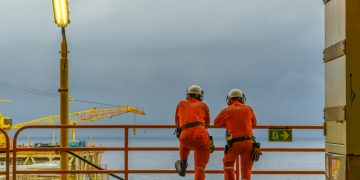
Danica introduces digital crew recruitment platform
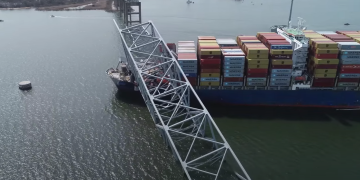
Baltimore opens a temporary channel

Key insights from Panama’s incident analysis 2020-2023

Do you know why a Ship Security Assessment is essential?
- Intellectual

Good communication is key to solving difficult issues

SEAFiT Barometer Survey: Promoting a healthy lifestyle is a key priority in wellness strategy

How two thinking systems impact decisions

Emotions may play a part in compromising safety
- Green Shipping
- Ship Recycling

Maritime consortium launches carbon insetting program
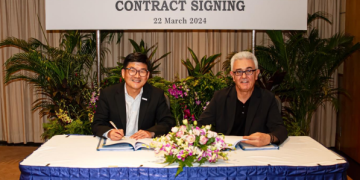
Seatrium secures diverse contracts worth S$350 Million
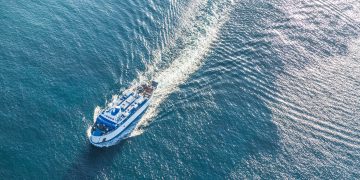
Interferry asks for increased investment in Onshore Power Supply
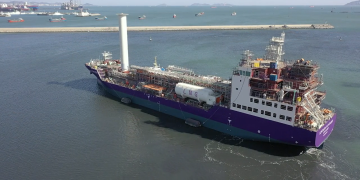
Northern Lights JV expands CO2 shipping fleet with vessels
- Connectivity
- Cyber Security
- E-navigation
- Energy Efficiency
- Maritime Software

BIMCO advocates for IMO digitalization strategy
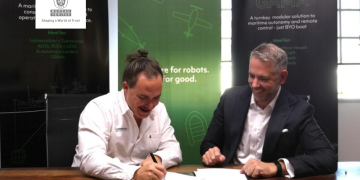
Bureau Veritas and Greenroom to advance maritime robotics
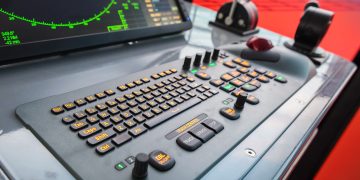
Disruption to electronic navigation systems near Saudi Arabia
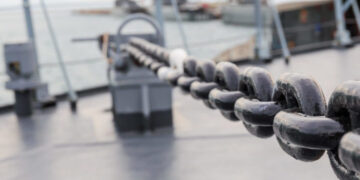
UK MCA: Foreign flagged ships detained in the UK during March 2024
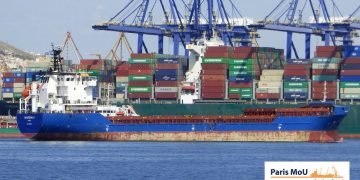
M/V “AIKATERINI K” refused access to the Paris MoU

Black Sea MoU: Highlights from the Port State Control Committee meeting

Coast Guard seizes Chinese fishing boats in Korean waters
- Diversity in shipping
- Maritime Knowledge
- Sustainability
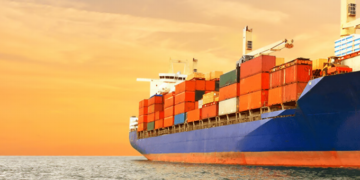
Baltic Exchange: Maritime market highlights 1 – 5 April
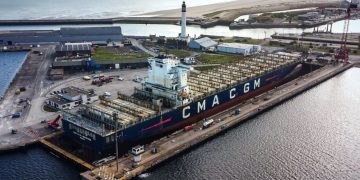
CMA CGM selects Damen to upgrade 100 vessels
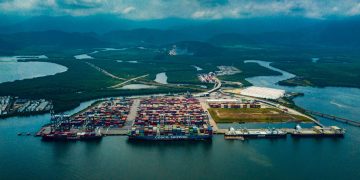
DP World to build new grain terminal at Port of Santos
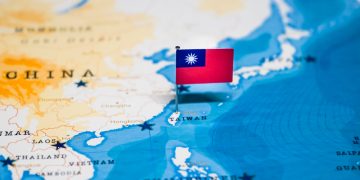
Hualien port operations suspended following major earthquake
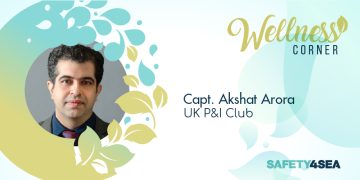
Wellness Corner: Capt. Akshat Arora, UK P&I Club
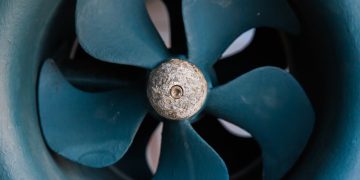
SKF Marine: Sustainable operation of propulsion systems
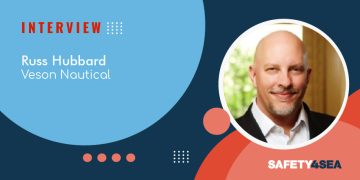
Veson Nautical: As the industry looks ahead, we need data in context to augment human decision-making
Trending tags.
- Book Review
- Career Paths
- Human Performance
- Industry Voices
- Maritime History
- Regulatory Update
- Seafarers Stories
- Training & Development
- Wellness Corner

Environmental Regulations in the Cruise Industry
How cruise ships protect the marine environment.
Jamie Sweeting, Vice President of Environmental Stewardship & Global Chief Environmental Officer of Royal Caribbean Cruises, discusses how cruise ships are regulated on environmental issues, from the International Maritime Organization down to local port and state regulsations.
He also touches on the innovations cruise ships are undertaking to protect the environment, including the new technologies on new ships to help protect the ocean and environment that are the backbone of a cruise vacation experience.
Related News
Ap companies: crew wellness and its impact on the workplace, cruise ships to use shore power in new york.

Shipping company convicted in ‘Magic Pipe’ case
Arctic voyage to give imo secretary-general first-hand insight on polar issues.
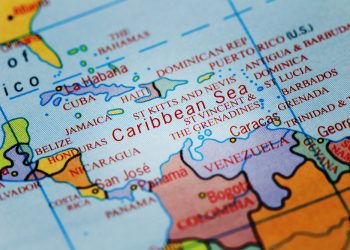
World’s largest cruise ship salvages 14 people
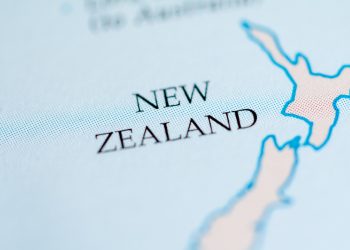
Cruise ships in New Zealand adhere to strict biofouling standards
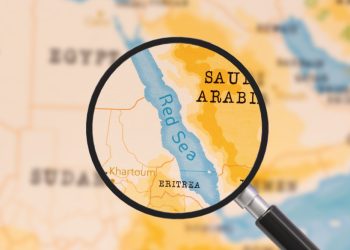
BIMCO: Revised maritime security guidelines for the Southern Red Sea and Gulf of Aden

Construction begins for Royal Caribbean’s second colossal vessel
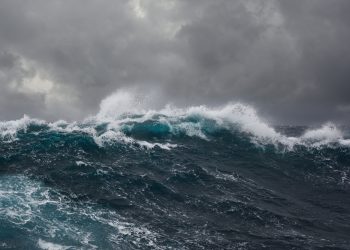
Cruise ship suffers damages due to rogue wave
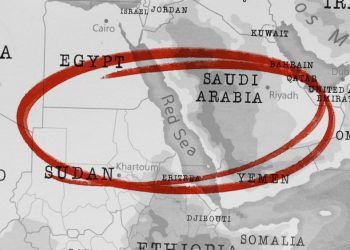
Joint industry security guidelines for Southern Red Sea and Gulf of Aden
Leave a reply cancel reply.
Your email address will not be published. Required fields are marked *
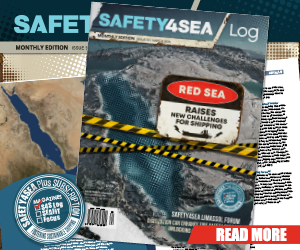
Explore more

- SAFETY4SEA Events
- SAFETY4SEA Plus Subscription
Useful Links
- Editorial Policies
- Advertising
- Content Marketing
© 2021 SAFETY4SEA
- PSC Case Studies
- Tip of the day

An official website of the United States government
Here’s how you know
Official websites use .gov A .gov website belongs to an official government organization in the United States.
Secure .gov websites use HTTPS A lock ( Lock A locked padlock ) or https:// means you’ve safely connected to the .gov website. Share sensitive information only on official, secure websites.
JavaScript appears to be disabled on this computer. Please click here to see any active alerts .
Regulations for Emissions from Marine Vessels
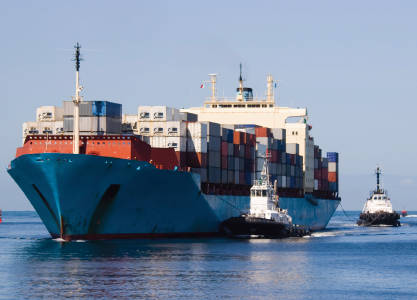
- Regulations for emissions from marine spark-ignition engines
- Domestic regulations for emissions from marine compression-ignition (diesel) engines
- International standards to reduce emissions from marine diesel engines and their fuels
- Regulations for Emissions from Vehicles and Engines Home
- Heavy Equipment
- Locomotives
- Recreational Vehicles
- Small Equipment & Tools
- Greenhouse Gas
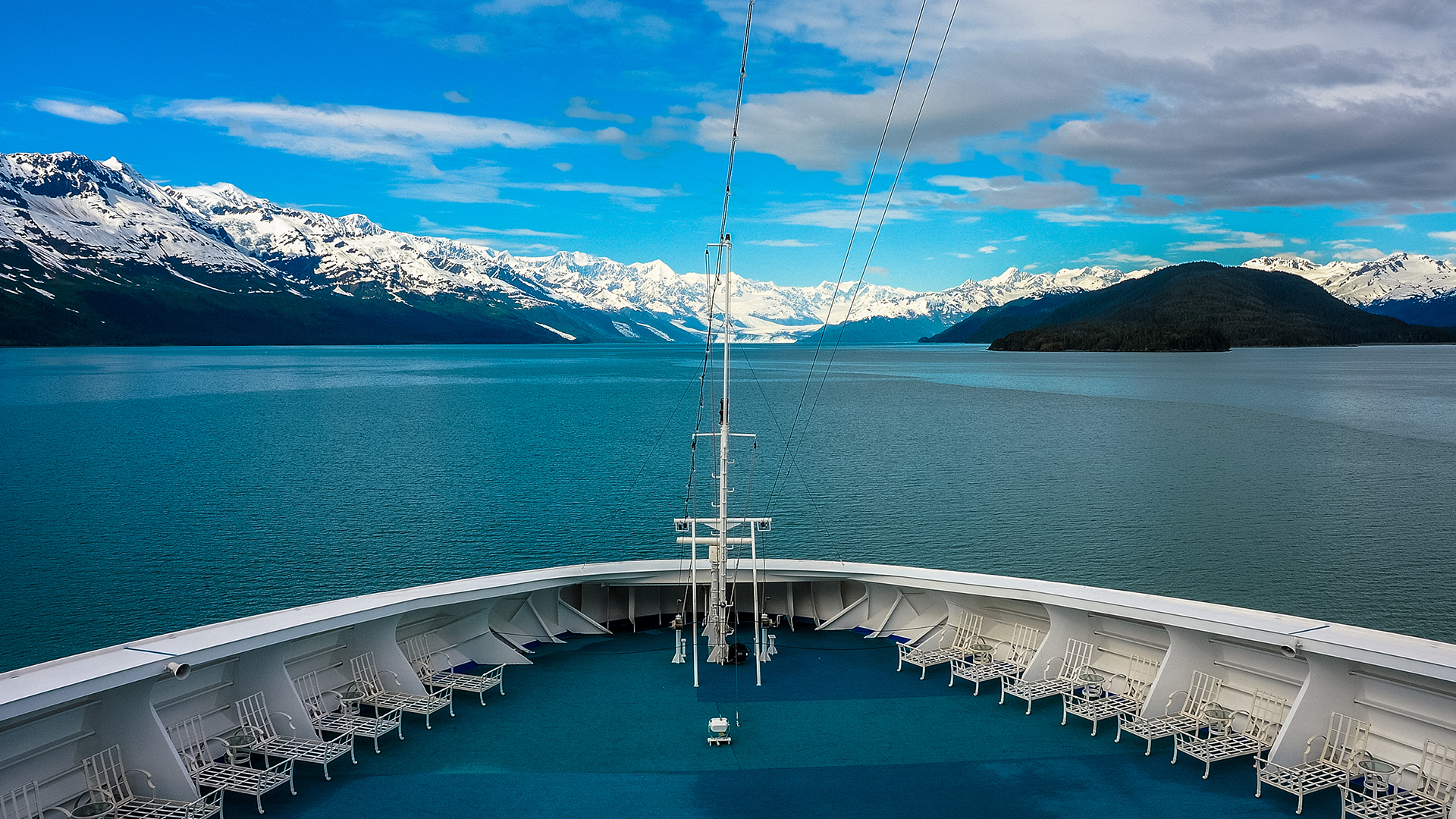
- Environment
“Green corridors” for cruise ships won’t be enough

The Alaska cruise season is all but over now for the year, but the pollution legacy of the massive ships that passed through B.C. waters remains. Several tourism business groups are celebrating the return to normal with plans for an even bigger cruise season in 2023. Unfortunately, as regulations stand , the pollution footprint of the cruise sector will also be returning to the West Coast next summer.
Greenwashing campaigns by the cruise ship industry with the creation of so-called “green corridors” should not placate the public. More needs to be done. The ocean faces overlapping crises of rapidly escalating climate change and biodiversity collapse, and there are a lot of actions to take. Many large-scale solutions are at our fingertips.
With the Biodiversity Conference of Parties (CBD COP15) happening in Montreal this month, Canada’s lack of leadership on protecting ocean biodiversity will be under international scrutiny. Federal policy-makers and regulators must address the biodiversity crisis happening within our borders and territorial seas. Transport Canada should implement mandatory anti-dumping regulations across all vessel types for sewage and greywater. It should also end all dumping of toxic fossil-fuel wastes in our oceans by banning heavy fuel oil. We need not only mandatory regulations, but transparent oversight in the form of public reporting, independent observers on vessels, and annual maintenance and performance testing for wastewater treatment systems. This should be happening now and certainly before another cruise ship season starts.
Ban on heavy fuel in the Arctic is too weak Support for Oil Tanker Moratorium Act has history on its side
Shipping is a highly polluting industry, and travel by cruise ship is the most environmentally destructive option for travel available to the mass market. Cruise ships produce more greenhouse gases per passenger-kilometre than air travel.
These floating resorts also generate huge volumes of sewage and greywater that are more contaminated than those from cities. There is also acidic fossil-fuel waste dumping and an increased oil spill hazard as a result of the industry’s choice to use heavy fuel oils. This industry presents major challenges for the ocean.
As the West Coast-to-Alaska cruise ship season began ramping up in spring 2022, a hope-inspiring announcement was made by a new group , the First Movers Commitment. The group promised talks to establish the first green cruise corridor in the world on the Alaska cruise route.

First Movers Commitment may be a play on First Movers Coalition , a group announced at the climate COP last year in Glasgow. That global coalition is a partnership between governments and industries to work in hard-to-decarbonize sectors such as shipping, cement, aviation and aluminum. While far from perfect, it does provide transparency and accountability about decarbonization pathways of coalition members.
None of the members of this Alaska cruise First Movers Commitment appears to be members or partners in the global First Movers Coalition .
Globally, green corridors are voluntary mechanisms now being used in the shipping industry that focus on greenhouse gases. While these climate pollution reductions are urgently needed, the current definition of green corridors ignores the waste dumping for which these ships are responsible.
These waste streams contain toxic contaminants that can be deadly to plankton and other marine creatures, cause issues in already at-risk salmon and migrate up the food chain to the endangered southern resident killer whales and communities that depend on seafood. Dumped wastes contribute to algae blooms, force the closing of beaches and create oxygen-free dead zones – none of which is good for marine ecosystems or a burgeoning blue economy.
Let’s be clear – the green cruise corridor announcement was only a promise to meet and talk. It was not a commitment to action for the 2022 or even 2023 season, nor was it a commitment to transparency or inclusion of non-industry stakeholders.
Many pollution-prevention solutions can be implemented by ship operators and regulators right now. The announcement could have detailed mandatory and widespread speed limits to increase fuel efficiency ; definitions of what will be considered “green” fuels for the corridor; expanding sewage no-discharge zones already in place under the U.S. Environmental Protection Agency; and investing in energy-efficiency retrofits with available technology. Instead, this announcement promised nothing.
Mandatory anti-dumping regulations for sewage and greywater, and a ban on heavy fuel oil are necessary first steps that should be taken without delay. This will do far more than a voluntary green corridor plan that has zero teeth and is greenwashing at best.

You are welcome to republish this Policy Options article online or in print periodicals, under a Creative Commons/No Derivatives licence.
Republish this article
by Anna Barford. Originally published on Policy Options December 5, 2022
This <a target="_blank" href="https://policyoptions.irpp.org/magazines/december-2022/cruise-ships-pollution-regulation/">article</a> first appeared on <a target="_blank" href="https://policyoptions.irpp.org">Policy Options</a> and is republished here under a Creative Commons license.<img id="republication-tracker-tool-source" src="https://policyoptions.irpp.org/?republication-pixel=true&post=105248&ga4=G-GR919H3LRJ" style="width:1px;height:1px;">

This work is licensed under a Creative Commons Attribution-NoDerivatives 4.0 International License .
Related stories

Unprecedented challenges for Canada’s mountains are driven by human activity

- Global Affairs
Making Greenland a full part of North America should be a priority for Canada

Mulroney’s “pink slips and running shoes” yielded to a trust of the public service

Mandatory Environmental Standards For Cruise Ships
The International Council of Cruise Lines has announced that its members have unanimously adopted mandatory environmental standards for all of their cruise ships.
By GreenBiz Editors
April 21, 2008
- Graywater and blackwater discharge.
- Hazardous chemical waste such as photo processing fluid and dry-cleaning chemicals.
- Unused and outdated pharmaceuticals.
- Used batteries
- Burned-out fluorescent and mercury vapor lamps.
View the discussion thread.
Share this article.
GreenBiz Editors
More by this author.

Episode 359: Lessons in finance, climate literacy
Episode 358: engineering sustainability, celebrating 'solutionists', episode 357: talking climate resilience, tipping points, episode 356: inside the cso role, targets meet impact, episode 355: esg culture wars, lessons about investing for impact.
Get articles like this delivered to your inbox
- Climate Tech
- Circularity
- ESG/Finance
- Sustainability Strategy
- UPCOMING EVENTS:
- Circularity 24
- GreenFin 24
- GreenBiz 25
- Safety and environmental standards on passenger ships
- Media Centre

Passenger ships must comply with all relevant IMO standards, including safety regulations and requirements for the prevention of pollution from ships.
The Titanic disaster of 1912 led to the first SOLAS treaty being adopted and there have been many revisions to regulations since then, both in response to major incidents and as a result of a pro-active approach to keeping the regulations up-to-date.
The SOLAS treaty applies to passenger ships carrying more than 12 passengers on international voyages. But IMO has also been working with countries to address the safety of so-called non-SOLAS ships, including developing model legislation and guidance.
Enhancing passenger ships' environmental performance
Cruise ships today can carry more than 5,000 passengers and crew. All passenger ships must comply with IMO MARPOL regulations for the prevention of pollution from ships.
For cruise ships, the correct disposal of garbage (MARPOL Annex V ) and treatment of sewage (MARPOL Annex IV ) is vitally important.
Passenger ships must also comply with all relevant energy efficiency and air pollution requirements (MARPOL Annex VI ). Since 1 January 2020, the sulphur content in the fuel oil used on board ships operating outside designated emission control areas has been limited at 0.50% - a significant reduction from the previous limit of 3.5%. This has helped to protect the health of people in ports and coastal areas - and passengers and crew on ships.
Training for seafarers and other personnel onboard passenger ships
Seafarers and other personnel on board passenger ships have a role to play in ensuring passenger safety. IMO regulations in the International Convention on Standards of Training, Certification and Watchkeeping for Seafarers ( STCW ) and its related STCW Code require seafarers and other personnel working on passenger ships to have specific safety and emergency training.
Persons with designated responsibility for the safety of passengers in emergency situations must complete approved training in crisis management and human behaviour.
Crew responsible for embarking and disembarking passengers, for loading, discharging or securing cargo, or for closing hull openings on board ro-ro passenger ships, must complete approved training in passenger safety, cargo safety and hull integrity.
Safe return to port - the 2006 SOLAS amendments
In 2010, a package of SOLAS amendments adopted in 2006 entered into force, affecting passenger ships built after 1 July 2010. The amendments were the result of a comprehensive review of passenger ship safety initiated in 2000 with the aim of assessing whether the current regulations were adequate, in particular for the large passenger ships being built. Increased emphasis is placed on reducing the chances of accidents occurring and on improved survivability, embracing the concept of the ship "as its own best lifeboat" and a philosophy of "safe return to port".
Click here for article on the passenger ship safety initiative.
Passenger submersibles
IMO has developed and issued guidelines on the design, construction and operation of passenger submersible craft ( see MSC.1/Circ.981 ) which provide internationally agreed safety standards for their design and operation. They apply to submersible craft adapted to accommodate passengers and are intended for underwater excursions with the pressure in the passenger compartment at or near one atmosphere.
The International Convention for the Safety of Life at Sea ( SOLAS ) is the main IMO instrument that specifies minimum standards for the safe construction, equipment and operation of merchant ships operating internationally. No mandatory regulations exist within SOLAS specifically relating to passenger submersibles since they do not fall under the current application provisions of the Convention.
However, certain SOLAS requirements apply to all vessels whilst at sea. Chapter IV on Radiocommunications requires all ships to, for instance, carry equipment enabling them to transmit and receive ship-to-ship distress alerts and communications coordinating a search and rescue operation.
Chapter V, which covers Safety of Navigation, includes a requirement for all ships to be fitted with an automatic identification system (AIS), enabling long-range tracking of a ship’s identity and position at a given date and time. It is the responsibility of flag States to determine to what extent safety of navigation regulations apply to small vessels and crafts.
In June 2023, five people died on board the deep-sea submersible Titan whilst en route to the wreck of the Titanic in the North Atlantic. IMO may be requested to take further action concerning the regulation of submersible passenger craft in the future, once the involved Member States have concluded their investigations.
Read more here about IMO’s work around casualty incidents. Information is available here on the process of survey, verification and certification of ships.
Response to Costa Concordia incident
IMO's Maritime Safety Committee (MSC) responded quickly to the Costa Concordia incident of January 2012, agreeing interim recommended operational measures for passenger ships at its meeting in May 2012. In June 2013, the MSC adopted amendments to SOLAS regulation III/19 to require musters of newly embarked passengers prior to or immediately upon departure, instead of “within 24 hours”. The amendments entered into force on 1 January 2015.
Download Recommended interim measures for passenger ship companies to enhance the safety of passenger ships .
In 2017, the MSC (MSC 98) adopted a set of amendments to SOLAS chapter II-1 relating to subdivision and damage stability. They entered into force on 1 January 2020. The amendments were developed following a substantive review of SOLAS chapter II-1, focusing in particular on new passenger ships. The review took into account recommendations arising from the investigation into the 2012 Costa Concordia incident. In conjunction with the adoption of the aforementioned amendments, MSC adopted the Revised Explanatory Notes to SOLAS chapter II-1 subdivision and damage stability regulations. The MSC also approved the Revised guidance for watertight doors on passenger ships which may be opened during navigation .
Domestic ferry safety
Domestic ferry operations play a crucial role in the movement of people and goods in the region and sometimes represent the only possible or reasonably affordable means of transport. While the regulations for passenger ship safety in IMO's International Convention for the Safety of Life at Sea (SOLAS) do not generally apply to passenger ships on domestic voyages, many countries base their regulations on the IMO standards.

In April 2022 IMO's Maritime Safety Committee (MSC) adopted recommendatory Model Regulations on Domestic Ferry Safety . They provide framework provisions on domestic ferry safety for incorporation into national law on a range of issues, including: certification; manning; safety management; navigation and communications equipment and life-saving appliances. They can be adapted by countries, as necessary, to suit their respective national conditions and requirements.
Watch this short animation on the importance of safety standards on domestic passenger ferries and the development of model regulations made as a collaboration between IMO and the Royal Thai Government.
Safety of passenger ferries in the Asia and Pacific region
IMO, in collaboration with partners including the international ferry industry association, Interferry, has been working with countries and partners in the Asia-Pacific region for a number of years to address the safety of domestic ferries, through regional fora and workshops. A set of guidelines (Manila Statement) on the safe operation of coastal and inter-island passenger ships not engaged on international voyages was adopted in 2015, by an international Conference, held in the Philippines and organized by IMO in collaboration with the Government of the Philippines, International Association of Classification Societies (IACS), Interferry, and the World Maritime University.
IMO commissioned a one-minute animated s afety briefing video for ferry passengers , to be shown in ferry terminals and on national TV channels following a series of IMO-sponsored regional discussion forums on ferry safety held in the Asia and Pacific region. Overloading and overcrowding were highlighted as common and potentially deadly problems for passenger ships plying inland waterways or on domestic and inter-island services. Watch the video below.
Upcoming Events
- CLIA Cruise Lines
- CLIA Global Executive Committee
- Mercy Ships
- Explore Topics
- Join or Renew
- Professional Development
- Travel Agent Cruise News
- Verify a Member
- Eligibility
- Marketing Partners
- Refund Policy
- Executive Partners
- Fact Sheets
- News and Media Room
- Australasia
- North America
- North West and Canada
- UK & Ireland
- My Certifications
- My Training
- Find a Travel Agent

- Cruising Home
- About The Cruise Industry
- Policy Priorities
- Cruise Industry Regulation
- CLIA Annual Report
- About The Program
- Environmental Stewardship
- Safety At Sea
- Security At Sea
- Cruise Ship Accessibility for Persons with Disabilities
- Cruise Industry Policies
The cruise industry is one of the most heavily regulated industries with robust, clearly defined standards. The average ship undergoes dozens of announced and unannounced safety inspections per year, involving hundreds of man-hours and the implementation of thousands of specific requirements set by the International Maritime Organization (IMO) and other authorities.
The cruise industry has a long history of ongoing review and improvement, with Cruise Lines International Association (CLIA)’s policies often exceeding requirements of international law. Providing for the safety of passengers and crew is, at all times, the industry’s top priority.
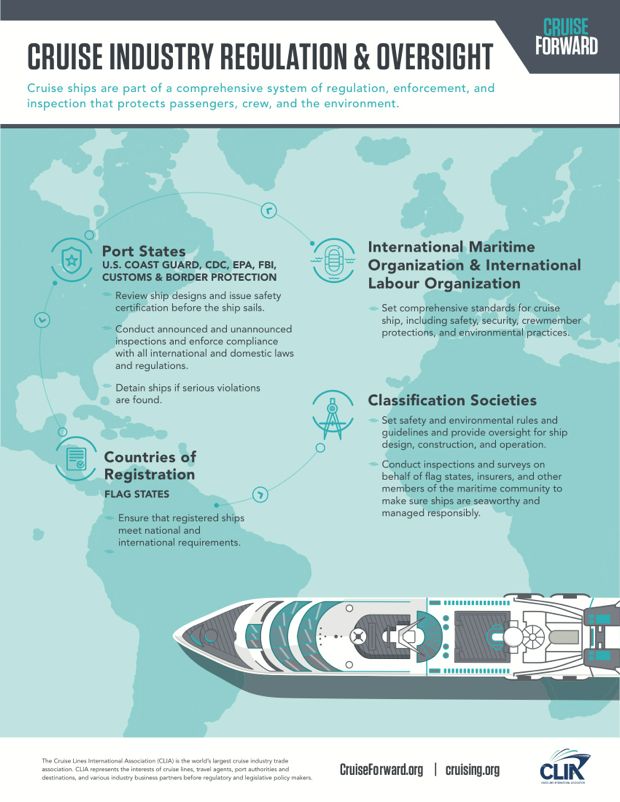
Regulatory Authorities
Cruise operations are tightly regulated with rigorous enforcement by outside authorities. These regulatory authorities set comprehensive standards for safety, security, crewmember protections, health, and environmental performance. International regulators include the IMO, International Labour Organization (ILO), and the World Health Organization (WHO). Also, agencies such as the U.S Coast Guard, the Centers for Disease Control and Prevention (CDC) and the Environmental Protection Agency (EPA) have full authority to regulate and enforce compliance for ships entering or departing from U.S. ports
Inspection and Enforcement
Cruise ships are subject to three robust layers of inspection and enforcement of international law and other requirements:
Port States:
Any country whose ports or waters are visited by a cruise ship has full authority to make sure that it follows international, national, and local regulations. Specifically, Port States inspect and enforce compliance with applicable international and domestic laws and regulations.
Countries of Registration:
The country or Flag State where a cruise ship is registered must make certain that registered ships meet all international requirements. Flag States also inspect ships on a regular basis to ensure compliance with both international and national requirements.
Classification Societies:
Independent agencies, called classification societies, conduct inspections on behalf of Flag States, cruise ship owners, insurers and other members of the maritime community to ensure that ships are in compliance with applicable standards and managed responsibly. These societies also set strict safety and environmental guidelines for design, construction and operation.
Consistent Updates:
International regulations are reviewed and updated to implement improvements. Specifically, the IMO reviews regulations on an ongoing basis through committee and subcommittee meetings, general sessions, and extraordinary sessions when warranted.
Don’t yet have a login? Create a new account
Forgot Password
If you have forgotten your Password, complete the information requested below and click the submit button.
You will receive an email with a reset token to change your password.
Please allow at least 10 minutes to receive the email before requesting another password reset. Please be sure to check your Spam folder for the password reset email.
Please note: the Email you provide must be the one that is associated with your profile.
If you have difficulty resetting your password please email [email protected] .
Create a New CLIA Account
Set or change password.
Please use the form below to set or change your password. Passwords must be at least 8 characters.
We are sorry. An error has occurred.
Please confirm.
We've detected unusual activity from your computer network
To continue, please click the box below to let us know you're not a robot.
Why did this happen?
Please make sure your browser supports JavaScript and cookies and that you are not blocking them from loading. For more information you can review our Terms of Service and Cookie Policy .
For inquiries related to this message please contact our support team and provide the reference ID below.

Cruises Have Become a Catastrophe to the Planet
T he cruise industry is at a crossroads, facing the dual challenges of growing demand and the urgent need for environmental sustainability. With innovations that suggest a greener future, the industry claims to be on a path to eco-friendly operations.
This shift has not only made cruising a popular holiday choice for many but also sparked a debate on the true environmental impact of these floating resorts.
As we dive into the realities behind these claims, it becomes clear that the journey toward sustainability is both crucial and complex.
Cruise Ship Evolution
The transformation of cruise ships from sleek, speed-oriented vessels like the Prinzessin Victoria Luise to the floating resorts we see today mirrors the changing tides of passenger demands and technological advancements.
The shift was propelled by the need to offer more than mere transportation.
As air travel became more accessible, cruise ships evolved into destinations themselves, boasting lavish amenities to lure travelers seeking luxury and leisure. This evolution has led to the construction of behemoths like Royal Caribbean’s Icon of the Seas, which can host nearly 10,000 people and features the world’s largest onboard water park, among other extravagant attractions.
The Environmental Wake
Despite the allure of these maritime marvels, their environmental footprint is hard to overlook.
The amount of CO2 emissions, particulate matter, and sulfur oxides produced by these vessels is staggering, dwarfing the pollution output of many other forms of transportation combined.
Cruise ships contribute significantly to air and water pollution, emitting more sulfur oxides in Europe than all the continent’s cars. Furthermore, they are a major source of ocean waste, responsible for a quarter of it, despite making up a mere fraction of the world’s merchant fleet. 1
A Sea of Solutions
The cruise industry has several means of mitigating its environmental impact. From reducing ship speeds to utilizing shore power and exploring alternative fuels like hydrogen or methanol, there are several pathways to greener cruising.
Some ports have seen notable improvements in air quality and greenhouse gas emissions by adopting these practices. However, the transition to more sustainable options like fuel cells has been slow, and the use of liquid natural gas, while reducing CO2 emissions, increases the overall greenhouse gas emissions due to methane leakage.
To fully address its environmental impact, the cruise industry must embrace a multi-faceted approach that includes technological innovation, infrastructure development, and operational changes.
The commitment of cruise lines to invest in new technologies and cleaner fuels and to collaborate on international research and development efforts highlights the industry’s potential to significantly reduce its carbon footprint and contribute to global environmental sustainability efforts. 2
Port Cities Take a Stand
In response to cruise ships’ environmental challenges, several European port cities have started imposing restrictions or outright bans on them. These measures have proven effective.
Venice, for example, saw a significant 80% drop in air pollutants from cruise ships after implementing a ban on large liners, demonstrating a potent approach to mitigating environmental damage. 3
Amsterdam is also taking steps to reduce the number of large cruise ships in the city center as part of a broader effort to decrease visitors and emissions, although specifics on implementation are still pending. 4
The Future of Cruising
As the cruise industry navigates through the choppy waters of environmental sustainability, the path forward is fraught with challenges and opportunities. The push towards greener innovations and the increasing restrictions by port cities highlight a critical juncture.
Will the industry chart a course toward genuine sustainability, or will it merely skim the surface of these deep-seated issues? The answer lies in the industry’s willingness to invest in and adopt truly sustainable practices that go beyond mere tokenism.
- independent.co.uk/travel/news-and-advice/cruise-ships-europe-emissions-pollution-b2358009.html
- ship-technology.com/features/roundtable-how-can-cruise-lines-reduce-environmental-impact/https://www.cruisemapper.com/news/11985-cruise-ship-air-pollutants-fall-venice
- afar.com/magazine/amsterdam-plans-to-ban-large-cruise-ships-what-to-expect
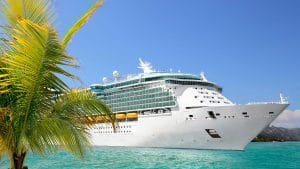
- Letters to the Editor
Cruise ships: Not a climate solution
I appreciated reading “ Require cruise ships to plug into shore power while docked in Seattle .” [Opinion, April 2] It feels like there’s some unwritten rule against being critical of the industry.
Cruise companies creating the greenhouse gases and toxic smoke should pay the entire $44 million for Pier 66 shore power. Making use mandatory for ships docking in Seattle seems like a no-brainer.
Since we’re having a refreshing moment of honesty, let’s say it: Shore power isn’t a climate solution for cruise ships. It’s good for public health, and communities near ports deserve protection from impacts equivalent to 34,000 diesel trucks idling.
As ships keep getting bigger and dragging more resort attractions around the ocean, the idea that they can somehow decarbonize one day becomes more of a fairy tale. A magical fuel of the future isn’t coming. If cruise companies, ports, and cities are serious about their climate commitments, the solution is much smaller, zero-emissions ships, where the main attractions stay on land at the destinations visited.
In the meantime, sailings should be reduced annually, lowering emissions while sending the industry a clear message about our priorities.
Stacy Oaks, Tulalip
Most Read Opinion Stories
- How Jack Smith just called out Judge Aileen Cannon in the Trump classified records case
- Democrats need to escape identity politics
- Bailed out Alaska Airlines executives are raking in big bonuses
- Politics colors our vision of the Evergreen State
- When it comes to math, maybe the kids aren't the problem

DeSantis, state environmental regulators greenlight bigger ships at Key West harbor
Larger ships sailing around troubled reefs and into the Key West harbor will be allowed for the next quarter century under an expanded lease deal approved by Gov. Ron DeSantis and his cabinet on Tuesday.
The deal, greenlit by the Florida Department of Environmental Protection, comes in the wake of an unprecedented ocean heat wave that bleached coral throughout the Keys and amid growing evidence that sediment churned up by ships damages reefs.
The unanimous vote was approved without discussion in just over a minute.
READ MORE: Scientists racing to save coral from bleaching are running out of space
In its recommendation, FDEP concluded expanding the lease space another 58,600 square feet to allow larger ships would be good for the economy without causing any environmental harm. But critics question how that determination could be made without a new environmental study. The larger space, they say, will allow ships 50% larger.
“The decision today [and] the lack of real regulatory performance by DEP really clearly demonstrates why we need federal oversight of clean water issues in Florida,” said Arlo Haskell, a board member at the nonprofit Safer Cleaner Ships, which opposed the expansion. “We have a regulatory agency that is not regulating.”
The expansion is the latest skirmish over cruise ships sailing to the four-square mile island at the tip of Florida.
After the pandemic shut down cruise traffic, residents and activists convinced the city council to permanently limit the number of passengers flooding the island to 1,500 a day. But DeSantis and lawmakers overturned those rules. In 2022, Safer Cleaner Ships and other activists convinced the council to pass a new rule: only one ship a day is now allowed to dock at the historic harbor.
This new lease comes after a wave of complaints over bigger ships that exceeded the boundary limits spelled out in a decades-old lease.
In response, DEP granted Pier B Development Corp. and president Mark Walsh, a temporary lease in June 2023 that expanded boundaries to accommodate the bigger ships.
Reef, seagrass and endangered species
In recommending full approval of the new lease, DEP officials noted that the expansion would not lead to worse water quality or harm any habitat or rare species. In the Keys, that includes the largest remnants of Florida’s reef tract, miles of seagrass meadows and endangered species including coral, sea turtles and manatees. The area is also home to sawfish, now undergoing a mysterious die-off. Since January, 27 of the rare fish have been found dead in Key West and around the Lower Keys.
A Florida International University study comparing water quality before and during the pandemic also found vast improvements in water quality with no cruise traffic. Turbidity and stirred up sediment that can block sunlight significantly decreased south of Key West and on the reef in 2020 compared to the previous 24 years, according to the report by Henry Briceno's Water Quality Monitoring Lab.
"What is interesting is that small improvements in turbidity ... swiftly cascade into observable changes in water quality perceived by Keys neighbors, and surely by the rich biota of the Florida Keys National Marine Sanctuary," the report said.
Those kind of impacts were anticipated more than 20 years ago when the state granted an original lease for cruise ship docking at the slip, Haskell said.
“The original lease was issued hand-in-hand with an environmental resource permit, which was very focused,” he said, and specifically looked at potential damage to bottom habitat around the shallow islands. "That permit says expansion of the lease is not authorized. So it's baffling to me.”
The Lower Keys Guides Association also opposed the expansion and in a letter to Cabinet members this week, reminded them that it had already fought twice to remove state preemption laws that overturned home rule. The group said DEP officials have not inspected the docks since 2019, despite complaints from guides and Safer Cleaner Ships about harms caused by sediment spread by ships.
“The original lease was issued hand-in-hand with an environmental resource permit [that] says expansion of the lease is not authorized. So it's baffling to me.”
They also worry that the ocean heat wave and worsening conditions spurred by ship traffic may have triggered the unusual behavior spotted in sawfish and other species this fall, including tarpon and snook that draw anglers from around the world.
As part of Tuesday's deal, Walsh agreed to donate $50,000 a year for the term of the lease to Mote Marine Lab, which operates a coral nursery at his resort hotel in Key Largo.
Mote also operates a reef research lab on Summerland as part of a growing effort to breed and replant coral on reefs in a race to restore the dwindling reefs. Scientists say the work is not meant to save the reef, but give it a lifeline until rising global temperatures and impacts from pollution can be brought under control.
“There was a bumper sticker when I was growing up, ‘Protect What’s Left,’” he said. “It’s sad because there's so little of it left. But first and foremost, anybody that sets out to protect the environment ought to actually be protecting it, not allowing it to be further injured.”


Will Santa Barbara Harbor welcome more cruise ships in 2024?

Juliet is your community news reporter covering the South Coast of Santa Barbara County.
Around 20 cruise ships visit Santa Barbara yearly, from September through May. They are bringing an estimated $3.4 million to the local economy, according to data from Visit Santa Barbara.
"We use that for capital projects, for staffing, for community events we throw which are all free events," said Angela Rodriguez, City of Santa Barbara Waterfront Services.
The money is also used to keep parking fees at waterfront lots low.
Rodriguez says approximately $500,000 of the harbor’s budget comes from cruise ships. Over the past two years, a Harbor Commission subcommittee has met with cruise ships, environmentalists, and the public to evaluate the pros and cons of allowing more ships into our harbor.
For Santa Barbara resident Barbara Greenleaf, it’s not worth the risk.
"I know that the harbor uses this money, and it is helpful, but not at the expense of our environment," Greenleaf said.
A sentiment echoed by fellow resident Michael Riley.
"I think it has a negative impact on our ocean… a positive impact on our economy, I guess. It’s also a blight visually. I just don’t like to see them parked offshore," Riley said.
Restaurateur Chad Stevens says he schedules more staff on cruise days but the spike in diners doesn’t make or break his business.
"I’ve got a line out the door right now and I don’t have a cruise ship, so I’m fine," said Stevens, owner of Chad's Cafe.
Organizations like Channel Keeper have recommended higher environmental standards for ships and limiting visits.
"Our recommendation is to set a cap of 18 cruise ships annually," said Ted Morton, Santa Barbara Channel Keeper Executive Director.
Jamie Diamond operates Santa Barbara Landing which provides dock space and handles security for cruise ship passengers that come ashore. Her business receives a fee of $12,500 per ship. Diamond believes the real threat to our environment is not from cruises.
"Storm runoff, agriculture runoff, sewage — those are the real issues. If we want to get tough on pollution, then let’s get tough on the real everyday pollution in our community here," Diamond said.
According to the Coast Guard, cruise ships in Santa Barbara have never caused an environmental issue but storms and sewage spills close the beaches regularly.
"We are really trying to find that middle ground and make it work for everyone in our community," Rodriguez said.
The topic will be discussed at the Santa Barbara City Council on April 9 at 2 p.m.
Sign up for the Headlines Newsletter and receive up to date information.
Now signed up to receive the headlines newsletter..

More News In Your Community
Cruises see a fair amount of overboard incidents: Are ships equipped?

Mental health crises can happen anywhere. But what happens if you're stuck in the middle of the ocean?
Between 2009 and 2019, there were 212 overboard incidents – when a guest or crew member goes over the edge of a ship – according to statistics compiled for Cruise Lines International Association by consulting firm G.P. Wild (International) Limited. "In discussions with cruise line representatives, they indicated that in every case where the cause of the (overboard) was established following a careful investigation it was found to be the result of an intentional or reckless act," the report said, noting that motives could not be determined in some cases.
There were also numerous reports of suspected suicides among crew trapped at sea during the COVID-19 pandemic. And while cruise lines have protocols and services in place to support to guests and crew members, some experts say they are lacking.
Cruise ships feature a range of amenities, from roller coasters and go-kart tracks to spas and dining, but passengers may not always know where to find mental health resources on board.
‘It’s really, really, really needed’
Cruise ships may be designed to prioritize fun and relaxation, but not everyone responds the same to that approach.
For some passengers, being around family members or away from their day-to-day routine can be stressful, said Dr. Tia Dole, Chief 988 Suicide & Crisis Lifeline Officer at Vibrant Emotional Health. “But for other people who might have been struggling with their mental health … going on a vacation actually takes you out of your environment, it makes you feel better,” she said.
The widespread presence of alcohol and gambling in onboard casinos may also prove challenging for some travelers, said Dr. Michelle Riba, a clinical professor at the University of Michigan Medical School's Department of Psychiatry and former president of the American Psychiatric Association.
"People have to be self-reflective and talk to their loved ones about how problematic it might be to be on a ship where there's easy access to that," she said.
And when it comes to the kinds of overboard incidents that appear in news reports with some frequency, she said jumping into the water has perhaps been featured prominently in films and TV shows, and cruises may provide another "access point" to impulsive suicides.
Travis Heggie, a professor at Bowling Green State University who studies tourist health and safety issues, said it's difficult to draw concrete comparisons, however, between rates at sea and on land due to a lack of comprehensive statistics. Riba added that it would be hard to compare the two, given varying demographics and other factors.
Still, suicide on cruise ships is a “growing concern” for Heggie, among both guests and crew. He has recommended adding mental health care to cruise ship infirmaries in his research .
“It’s really, really, really needed,” he said.
Dole also emphasized that “the reasons why people die by suicide are as unique as a fingerprint” and said it’s important not to generalize.
"The circumstances that lead up to completed suicide, and the things that sort of push people over the edge are incredibly unique," she said.
Do cruise ships have mental health resources?
If passengers find themselves in need of mental health support during a cruise, some lines do have resources available.
Passengers sailing with Carnival Corp., the parent company of brands including Carnival Cruise Line, Princess Cruises and Holland America Line, can contact onboard medical staff “who are available 24/7 for mental health support and other medical needs,” a spokesperson for the company said in an email.
“With a referral from the shipboard medical team, guests may also access tele-psychiatrist services for face-to-face consultations with these licensed specialists within 24 hours if needed,” the spokesperson added. The consultations are offered through a third-party company that connects passengers with U.S.-based psychiatrists (the company did not respond to USA TODAY’s request for comment).
While training in mental health care varies among onboard medical staff, they can “fulfill recommendations made by the psychiatrists.” There is a pharmacy on board with many medications used to treat mental health problems, and those not carried on the vessel can be ordered in a port.
Like other medical care, passengers have to pay for any costs associated with mental health services. “Travel insurance coverage varies by provider and typically covers acute-need services but usually includes limitations for pre-existing illnesses,” the spokesperson said. “We urge travelers to contact travel insurance providers directly for specific terms and conditions.”
Crew members can also see psychiatrists via telehealth with a referral from the onboard medical team. The company also has an employee assistance program that allows them to access free mental health services.
Royal Caribbean Group, another major cruise line operator, and Cruise Lines International Association, the industry’s leading trade group, did not answer questions regarding onboard mental health resources before publishing. Norwegian Cruise Line Holdings Ltd. did not respond to a request for comment.
Cruise ships may also quarantine passengers deemed to be a threat to themselves or others, according to Michael Winkleman, a maritime attorney with Lipcon, Margulies & Winkleman, P.A.
“Our team of onboard medical professionals safeguards the health and well-being of our guests and crew (including mental health), which may include placing a patient under secure watch in the medical center or in a cabin depending on the risk,” the Carnival Corp. spokesperson said.
While there are major differences – namely, being in the middle of the ocean – Winkleman said there are some commonalities between cruise lines’ approach and that of hotels or resorts, which often do not have on-site mental health providers. “They are just expecting to provide a fun, safe vacation for their guests,” he said.
Crises on cruises, like an overboard incident, for example, may also get outsized attention given their setting, Heggie added. "People are expecting to go and have a good time and have the vacation or holiday mindset, and, 'Oh, something bad happened.' "
However, Winkleman said he thinks cruise lines “could do a lot more” to provide mental health support to crew, many of whom work rigorous schedules on months-long contracts.
How passengers can care for their mental health
Travelers can take proactive steps to care for their mental health before a trip if need be. If passengers have a mental health provider, Dole recommends speaking with them beforehand and making sure they have any medication they might need.
Passengers can also reach out to their therapists mid-cruise to schedule a session as needed – though state laws regarding telehealth vary and could prevent them from accessing care. “But generally speaking, it's really about where the person resides,” Dole said. “So (if) you're on a work trip, and you're like, ‘I need to see my therapist,’ they'll see you.”
Riba noted that it may be more difficult to coordinate than at home with spotty cell service and possible time differences.
The 9-8-8 Suicide & Crisis Lifeline also works in U.S. states as well as territories like Puerto Rico and the U.S. Virgin Islands.
How safe are cruise stops?: Travel advisories are only one marker for destinations
Checking in with your fellow travelers can also be helpful. Dole said, “One of the biggest clues someone is struggling” is a change in behavior. Typically, that takes the form of withdrawal, but it could also manifest in people engaging in risky or dangerous behaviors.
“‘I noticed something is different,’” she suggested saying. “‘Is there something happening that you feel comfortable talking to me about?’ And that that's not going to make people be defensive as much as, ‘What's wrong? Are you okay? What's happening?’”
Dole recommended framing the question in a way that avoids sounding judgmental or accusatory. “But actually asking the question, especially for young people, can save someone's life,” she said.
If you or someone you know may be struggling with suicidal thoughts, you can call 988 any time day or night, or chat online. Crisis Text Line also provides free, 24/7, confidential support via text message to people in crisis when they dial 741741.
Nathan Diller is a consumer travel reporter for USA TODAY based in Nashville. You can reach him at [email protected].
I steered ships like the Dali for 13 years. Entering and leaving a port is extremely challenging — here's what should have been done in Baltimore.
- Sachin Saxena is a former ship captain who spent 13 years navigating the globe on large ships.
- He breaks down the process of entering and exiting ports in big vessels like the Dali.
- In emergencies like power failures, a ship can't just stop and there's a lot of pressure on board.

This as-told-to essay is based on a conversation with Sachin Saxena, a 45-year-old former ship captain from Singapore. It has been edited for length and clarity.
I captained ships transporting liquid petroleum gas from Asia to the United States for 13 years, from 1997 to 2010. Entering or leaving a port is one of the most challenging parts of any voyage. When you enter a port, you need to consider everything from currents to shallow patches and bridges.
When I saw the news about the MV Dali hitting the Francis Scott Key Bridge in Baltimore, I wasn't worried about the crew. I knew the crew would be safe because the ship was still floating. I was more concerned about people outside the ship.
Hitting a bridge would be a navigation team's worst nightmare. If the MV Dali's power had failed after the vessel had passed the bridge, I believe nothing would have happened.
It's not unusual for a ship to hit a bridge, but there are protocols to prevent it
It's not unusual for a ship to hit a bridge, especially in the US, which has many sea bridges . Seeing the MV Dali incident, the crew couldn't do much because there was so little distance between the vessel and the bridge and it was the result of a power failure.
When I was a captain and used to pass bridges, I would stand on the top of what sailors call "monkey island," a deck in front of the navigating bridge and the uppermost accessible part of the ship, to ensure we had clearance and everything went smoothly.
Related stories
We used electronic charts to navigate in and out of ports, but I also used to double-check the calculations myself because I used to sail on ships carrying liquid petroleum gas. If my ship ran into a bridge, an entire city could be blown away, so the safety factor was very high.
The procedure when an incident like this happens
If my ship suddenly lost power, the first thing I'd do would be to drop the anchor. You don't need power to do this. However, anchors aren't always effective if the ship is moving fast. Each ship, whether a container ship, dry bulk, chemical, or LPG ship, will have an emergency generator. This will start about 45 seconds after the ship's power has failed.
This doesn't give you full steering, but it gives you emergency steering that you can use to get into clear water and anchor. It takes time to slow a ship down. If you're moving at 5 knots and put on the brake, it will slowly come down to 4.8 knots, 4.6 knots, and so on — it won't just stop. There isn't a single solution to such a situation. Each case is different.
There are several questions that an internal auditor would want the management of the ship to answer
After I stopped working as a captain, I became an internal auditor for a shipping company, where I carried out audits on the health, safety, and environment of merchant ships worldwide.
When you first hear that an incident like the Baltimore crash has occurred, there are several questions that, as an internal auditor, I'd want the management of the ship to answer. I'd want to know whether the bridge was mentioned in the passage-plan meeting — a meeting before the voyage attended by the captain and senior officers from the navigation team and engineering. You also have another meeting about the next port while at the previous port, where you'd discuss things such as currents.
I'd also want to know what triggered this power failure. Has it happened before, and how often has the ship received maintenance?
There's something called the planned maintenance system. In the same way that a car manufacturer guides you on what you need to do to the car after 50,000 miles, every piece of equipment on the ship has a guideline on how it should be maintained. So I'd want to check whether routine maintenance and long-term preventive-maintenance guidelines were followed.
How a shipping company would manage a collision
In the event of an incident, the shipping company would establish an emergency control room at the company headquarters in their own country, which would be manned 24/7. They would have everything about the ship in that room, such as drawings of the vessel. The shipping company's staff would communicate with the ship and the agent on the ground, who is nominated to speak on their behalf.
They will also take a look at the black box on the bridge , which contains the voice recordings of everything that was said on the bridge between crew members and what they said when speaking to the authorities or the engine room.
Being an outside observer of an event like this makes it easy to comment, but I do think about the captain of that ship and the pressure they must be going through.
We cannot change what happened, but thousands of vessels trading worldwide can learn from this and understand what happened to ensure that such accidents do not happen again.
Watch: The container ship that destroyed the Francis Scott Key Bridge has crashed before
- Main content

News | Baltimore-bound cruise passengers arrive in…
Share this:.
- Click to share on Facebook (Opens in new window)
- Click to share on X (Opens in new window)
Evening Edition
- Latest Headlines
- Courts and Crime
- Environment
News | Baltimore-bound cruise passengers arrive in Norfolk

NORFOLK — It is safe to say that most of the Carnival Legend cruise passengers did not think their vacation would end this way.
The sun had not yet risen as the cruise ship — which departed Baltimore’s port several days ago — docked at 4 a.m. Sunday at the Half Moon Cruise and Celebration Center. Downtown was quiet, many still asleep or attending a sunrise Easter service, as an impressive fleet of charter buses circled the cruise center. By 6:45 a.m., the ship’s passengers were working on their next phase of travel. For many, that meant a four-hour bus ride back to Baltimore.
Ships typically return to the port from which they leave, but when disaster struck midway through the cruise, staff had to work fast to find a port available to receive vacationers. The solution: Norfolk.
During the trip, officials closed the Port of Baltimore to all incoming and outgoing ship traffic after the Francis Scott Key Bridge collapsed early Tuesday morning when it was struck by a container ship. The bridge carrying Interstate 695 collapsed in moments, sending several vehicles into the Patapsco River.
Last week, Carnival Cruise Line announced the ship will operate out of Norfolk, and Royal Caribbean’s Vision of the Seas will do the same. Each ship can carry more than 2,000 people.
Lines of sun-kissed cruise-goers towing suitcases began to form as the sun crested over the horizon, many donning Carnival-themed attire and fresh sunburns.

The weather Sunday morning in the Mermaid City was likely much different than conditions they were enjoying in the Bahamas just days ago. Cab drivers parked alongside buses, waiting on customers, and some spoke to each other about how Sunday was likely to be a money-maker as cruise passengers opted to rent cars or fly back to Baltimore instead of braving the bus ride.
Sandy Crow, of Manassas, and her sister Kathy Grant, stood outside Nauticus, waiting for Crow’s husband to pick them up. Crow said she heard about the bridge collapse from another passenger.
“What a tragedy,” she said.
Crow said she has been to Norfolk before, highlighting the Norfolk Mac and Cheese Festival, and the two had been celebrating a sisters’ trip together over the past week. After finding out about their future arrival in Norfolk, Crow said driving home was the preferred option.
“The captain and the whole crew was so good communicating with us. Within a day, we knew we where were going to be. It was all handled beautifully,” Crow said. “It’s about three hours (to Manassas). It’s better than taking a bus for four or five hours, and then it would be another two hours. My husband just said, ‘I’ll just drive down there.’”
As cruise ships reroute to Nauticus, the Port of Virginia is ready to receive diverted cargo traffic from the Port of Baltimore. The collapsed bridge blocks the only channel in and out of the port on the Patapsco River. The port will be unable to receive shipping traffic until the channel is cleared , and stands to lose an estimated $15 million per day in economic activity.

Some passengers who spoke to The Virginian-Pilot said they heard the news of the tragedy from the captain, and the crew handled it the best they could. Despite the tragedy, many said the trip was still a good one although it is ending differently than they had originally planned.
For other passengers, the trip does not even end in Baltimore. Jackie Plum and her family took their Spring Break trip out of Baltimore, but they are actually from Michigan.
“When they announced that the the bridge collapsed, I think the cruise ship handled it really well. They made it as stress free as possible,” she said. “We kind of changed our plans at the last minute because so (the reroute) is adding, like, an extra four hours to our drive. Now, we have to go four hours back to Baltimore and then eight hours to Michigan. We were trying to get off the ship as fast as we can, and at the last minute, we decided to rent a car at the airport.”
For the foreseeable future, Norfolk will be welcoming more passengers, including a Royal Caribbean cruise later this week on April 4.
“You know what? Stuff happens,” Crow said. “The only thing I’m upset about is people lost their lives.”
Eliza Noe, [email protected]
More in News

World News | Biden urges Egypt, Qatar leaders to press Hamas to come to agreement for Israeli hostages in Gaza

City Politics | Virginia Beach business owners concerned about hip-hop, rap heavy Audacy festival lineup

SUBSCRIBER ONLY
Courts | a norfolk man fatally shot a friend while several others stood by. he’ll serve 32 years in prison..

News Obituaries | Larry Maddry, popular Pilot columnist for more than 30 years, dies at 90
Trending nationally.
- What you need to know about next week’s total solar eclipse
- What lies below: Pipeline beneath Key Bridge wreckage complicates an already complex cleanup
- Do they still make pinball machines? They do, in a huge new factory near O’Hare — with most selling to the 1 percent
- 2024’s ‘extremely active’ hurricane season could bring 23 named storms, experts say
- 99 Cents Only to close all 371 of its stores

IMAGES
COMMENTS
Cruise Ship Discharge Assessment Report (2008) *. An overarching report prepared by the EPA that examines five different cruise ship discharges (sewage, graywater, oily bilge water, solid waste and hazardous waste). For each waste stream, the report discusses: what the waste stream is and how much is generated. what laws apply to the waste stream.
1 For vessels operating under sail, or a combination of sail and motor propulsion, the speed shall not be less than 4 knots. 2 The term "geographically limited" includes special circumstances where a ship is operating in internal waters or shoreward of a territorial sea baseline for an extended period of time, in which case any applicable laws and regulations will be controlling.
Cruise Ship Pollution: Background, Laws and Regulations, and Key Issues. July 2, 2004 - December 15, 2010 RL32450. The cruise industry is a significant and growing contributor to the U.S. economy, providing more than $32 billion in benefits annually and generating more than 330,000 U.S. jobs, but also making the environmental impacts of its ...
environmental laws and regulations. » All CLIA cruise lines members are required to follow more stringent air emissions requirements when operating in Emission Control Areas (ECAs) in and around North America and the Caribbean, the North Sea and the Baltic Sea. » When ships operate outside of ECAs, CLIA cruise
Cruise ships operate in every ocean worldwide, often in pristine coastal waters and sensitive marine ecosystems. Cruise ship operators provide amenities to their passengers that are similar to those of luxury resort hotels, including pools, hair salons, restaurants, and dry cleaners. As a
cruise ships.5 In 2021, about 10% of CLIA member lines' global passenger capacity is equipped with SCR Systems - a four percentage point improvement from the approximately 6% coverage in 2020. EGCS, WFE, and SCR empower cruise ships to meet or exceed MARPOL requirements using existing engine technology and demonstrate the value of
Navigating the regulatory environment. With the urgency of environmental concerns increasing around the world, exhaust gas emissions for cruise ships are not only subject to tightening IMO regulations but also to new, local efforts to protect vulnerable ecosystems. A look at the current and future restrictions.
Cruise ships must be effectively regulated to minimize serious environment and health impact. ScienceDaily . Retrieved April 1, 2024 from www.sciencedaily.com / releases / 2021 / 09 / 210928193815.htm
Jamie Sweeting, Vice President of Environmental Stewardship & Global Chief Environmental Officer of Royal Caribbean Cruises, discusses how cruise ships are regulated on environmental issues, from the International Maritime Organization down to local port and state regulsations. He also touches on the innovations cruise ships are undertaking to ...
Reuters. Carnival Corporation has paid millions of dollars in fines over the years for violating environmental regulations. Carnival is the parent company of major cruise lines like Carnival ...
Costa's Environmental Compliance Department -- and a dedicated environmental officer aboard each ship -- ensures all regulations are obeyed and handles any issues that arise. Crew members receive ...
Domestic regulations for emissions from marine compression-ignition (diesel) engines. International standards to reduce emissions from marine diesel engines and their fuels. Last updated on June 7, 2023. This page provides links to regulations for controlling emissions from marine vessels.
Let's be clear - the green cruise corridor announcement was only a promise to meet and talk. It was not a commitment to action for the 2022 or even 2023 season, nor was it a commitment to transparency or inclusion of non-industry stakeholders. Many pollution-prevention solutions can be implemented by ship operators and regulators right now.
The trade group representing the cruise ship industry pushed international authorities to water down new environmental regulations despite its members' climate commitments, experts in marine air ...
Cruise ship environmental impact is a serious problem that requires urgent action. The environmental regulations that apply to cruise ships are a good start, but more needs to be done to ensure that these regulations are complied with and that the environmental impact of cruise ships is reduced.
These standards are based on principles that include: designing and constructing cruise ships to be as environmentally friendly as possible, embracing new technology, complying fully with international and U.S. environmental laws, minimizing waste production, and maintaining cooperative relationships with the regulatory community.
Cruise ships generate a number of waste streams that can result in discharges to the marine environment, including sewage, graywater, hazardous wastes, oily bilge water, ballast water, and solid waste.They also emit air pollutants to the air and water. These wastes, if not properly treated and disposed of, can be a significant source of pathogens, nutrients, and toxic substances with the ...
Enhancing passenger ships' environmental performance. Cruise ships today can carry more than 5,000 passengers and crew. All passenger ships must comply with IMO MARPOL regulations for the prevention of pollution from ships. ... While the regulations for passenger ship safety in IMO's International Convention for the Safety of Life at Sea (SOLAS ...
Environmental Groups Sue EPA Over Ship Discharge Regulations. In February 2023, the Center for Biological Diversity and Friends of the Earth sued the US Environmental Protection Agency (EPA) on claims that EPA failed to timely establish discharge regulations for oceangoing vessels. ... Italian Shipbuilder Fincantieri Floats its First LNG Cruise ...
The cruise industry is one of the most heavily regulated industries with robust, clearly defined standards. The average ship undergoes dozens of announced and unannounced safety inspections per year, involving hundreds of man-hours and the implementation of thousands of specific requirements set by the International Maritime Organization (IMO) and other authorities.
The Commercial Passenger Vessel Environmental Compliance (Cruise Ship) Program was established in July 2001 by AS 46.03.460 - AS 46.03.490. The Alaska Department of Environmental Conservation (ADEC) worked with a facilitator and a Negotiated Regulations Committee to draft regulations to accompany this law.
Europe's cruise sector is slated to contribute more than €600 million ($655 million) to the emissions program, known as ETS, starting in 2026, Laurent said. But at least part of that total ...
A Sea of Solutions. The cruise industry has several means of mitigating its environmental impact. From reducing ship speeds to utilizing shore power and exploring alternative fuels like hydrogen ...
Cruise companies creating the greenhouse gases and toxic smoke should pay the entire $44 million for Pier 66 shore power. Making use mandatory for ships docking in Seattle seems like a no-brainer ...
DeSantis, state environmental regulators greenlight bigger ships at Key West harbor. Two cruise ships docked in Key West at the same time in February 2023, despite the the fact that city ...
The waste streams generated by cruise ships are governed by a number of international protocols (especially MARPOL) and U.S. domestic laws (including the Clean Water Act and the Act to Prevent Pollution from Ships), regulations, and standards, but there is no single law or rule. Some cruise ship waste streams appear to be well regulated, such ...
Cruise ships bring an estimated $3.4 million to the local economy, according to data from Visit Santa Barbara. ... Diamond believes the real threat to our environment is not from cruises. "Storm ...
Cruise ships feature a range of amenities, from roller coasters and go-kart tracks to spas and dining, but passengers may not always know where to find mental health resources on board. 'It's ...
Roberto Schmidt/AFP/Getty Images. Sachin Saxena is a former ship captain who spent 13 years navigating the globe on large ships. He breaks down the process of entering and exiting ports in big ...
The Carnival Legend docked at the Half Moone Cruise Center in Norfolk early Sunday morning, March 31,2024. At 6:30AM passengers began to leave the ship and board waiting buses for a trip back to ...